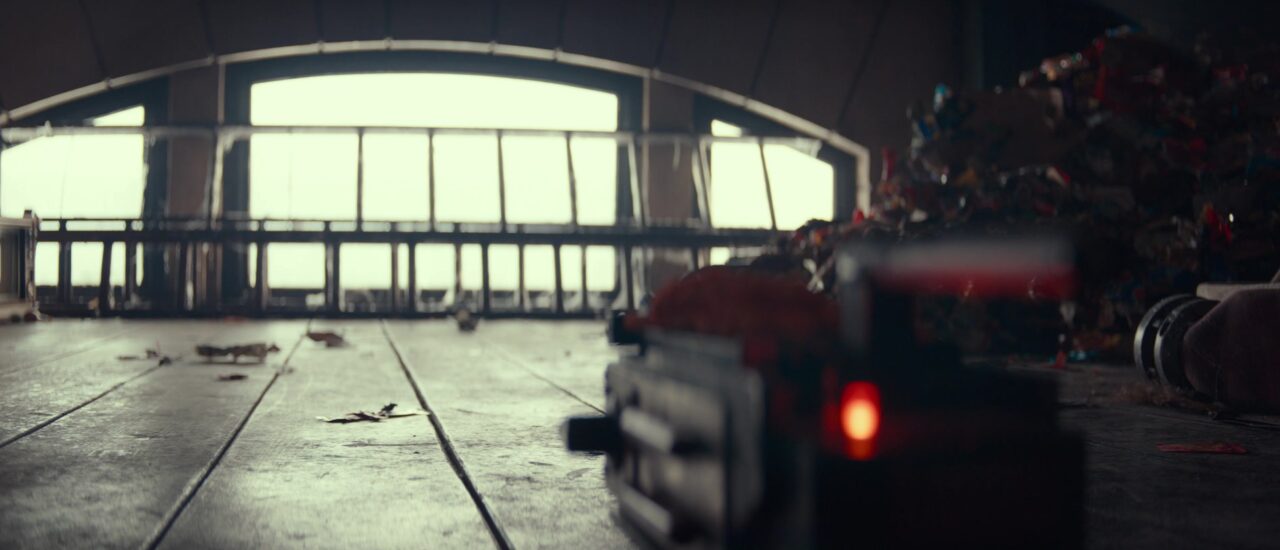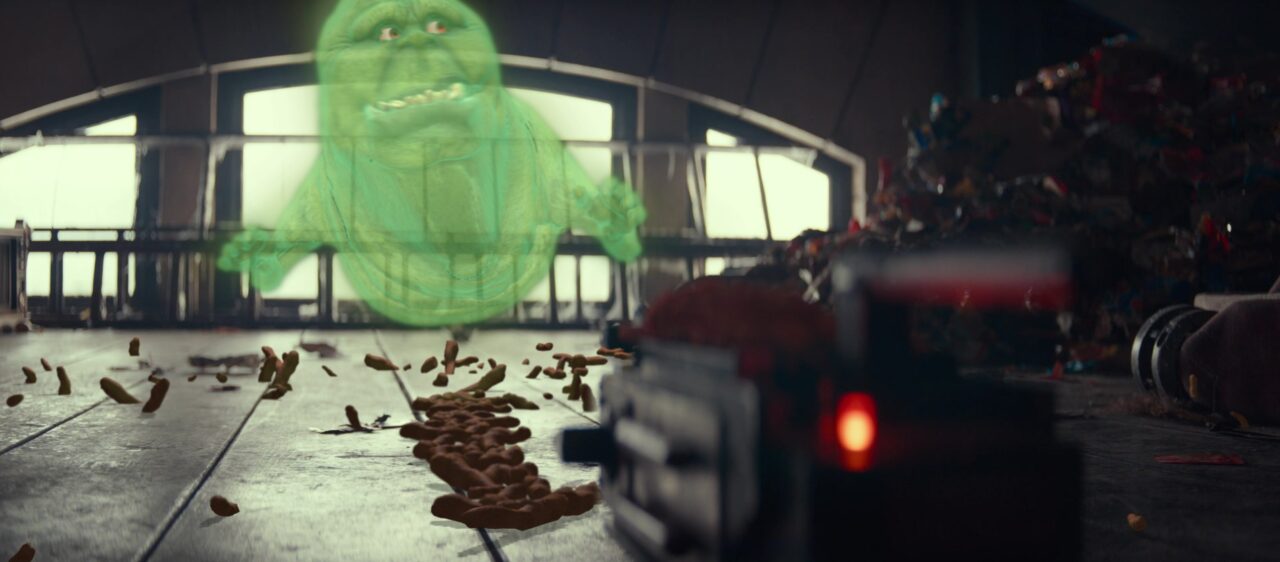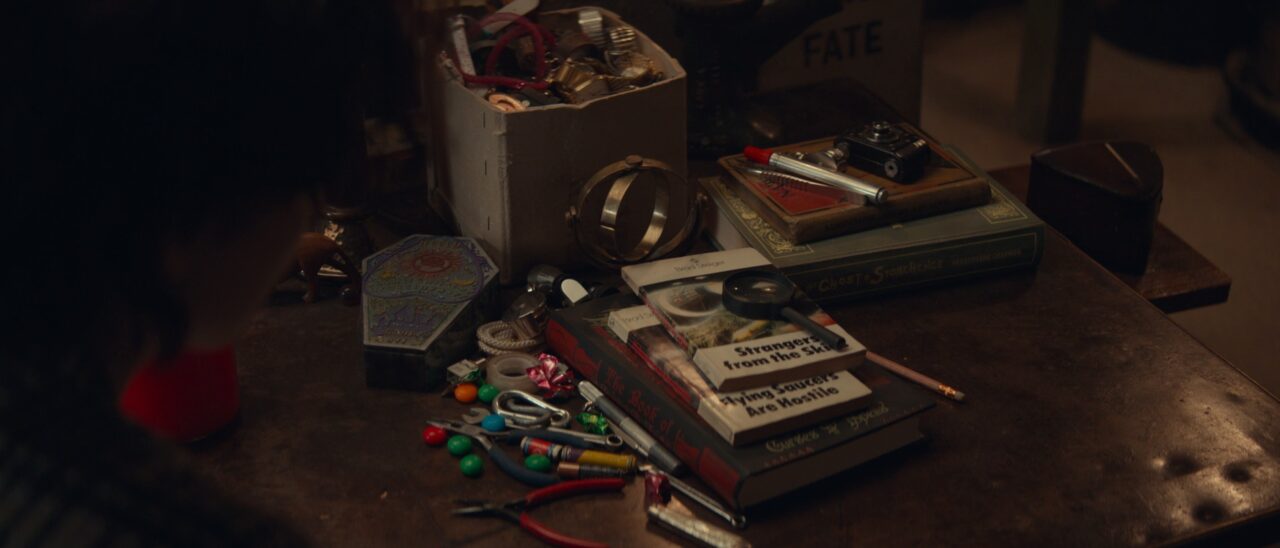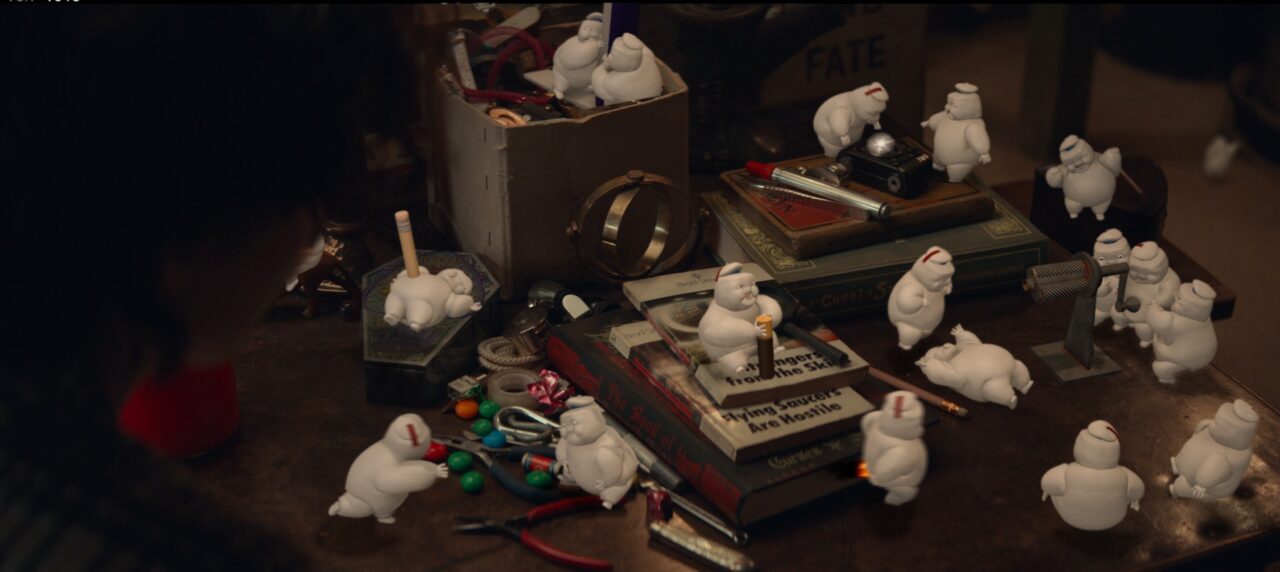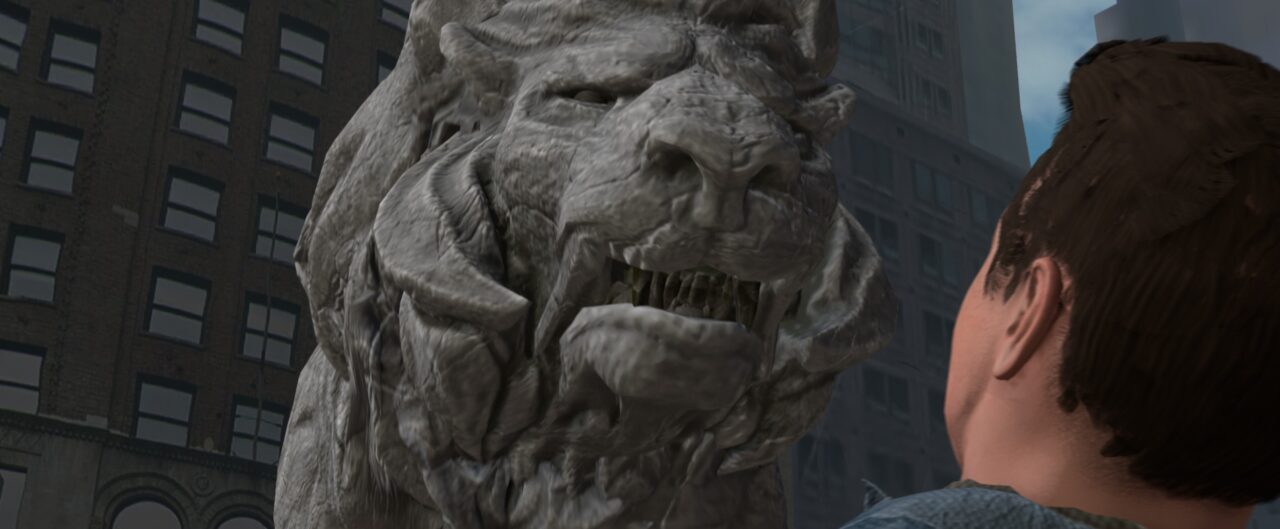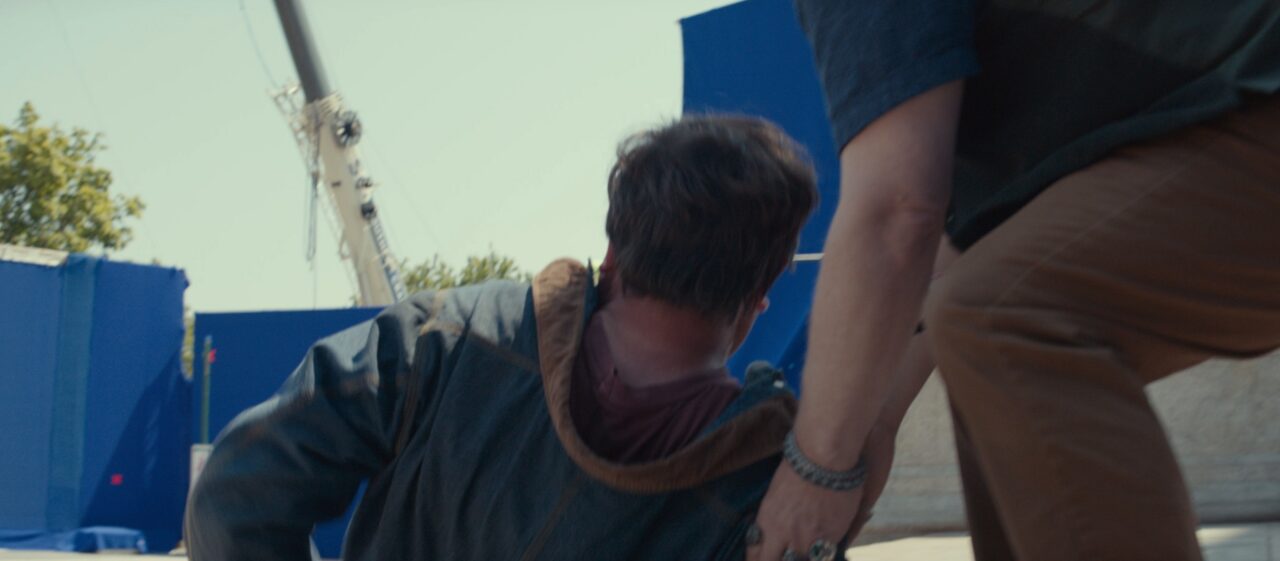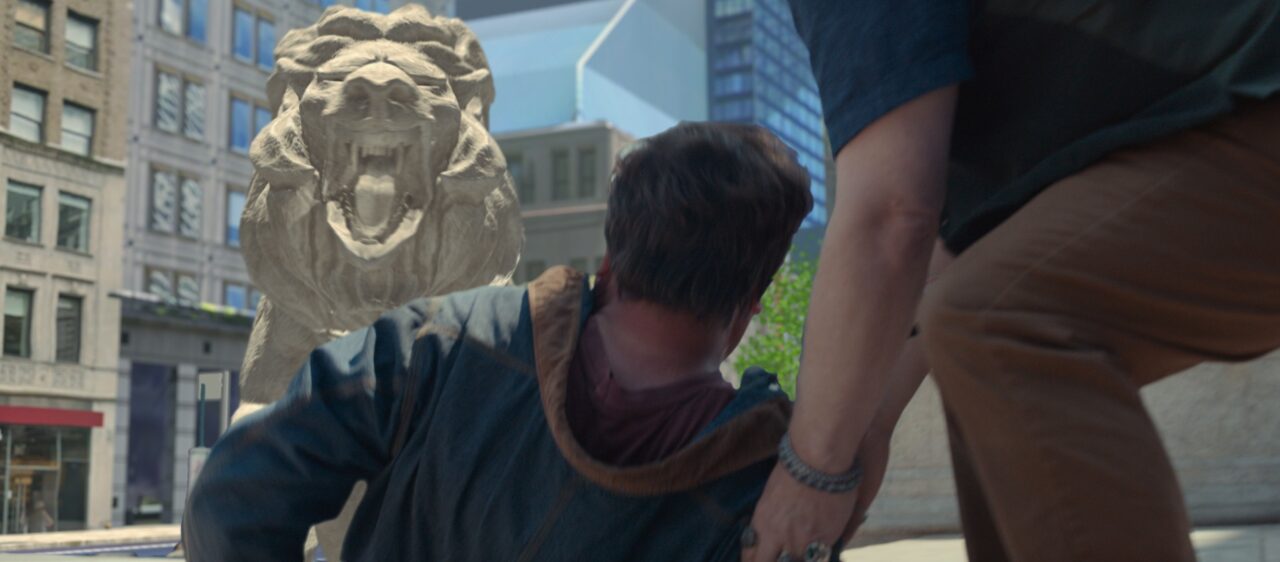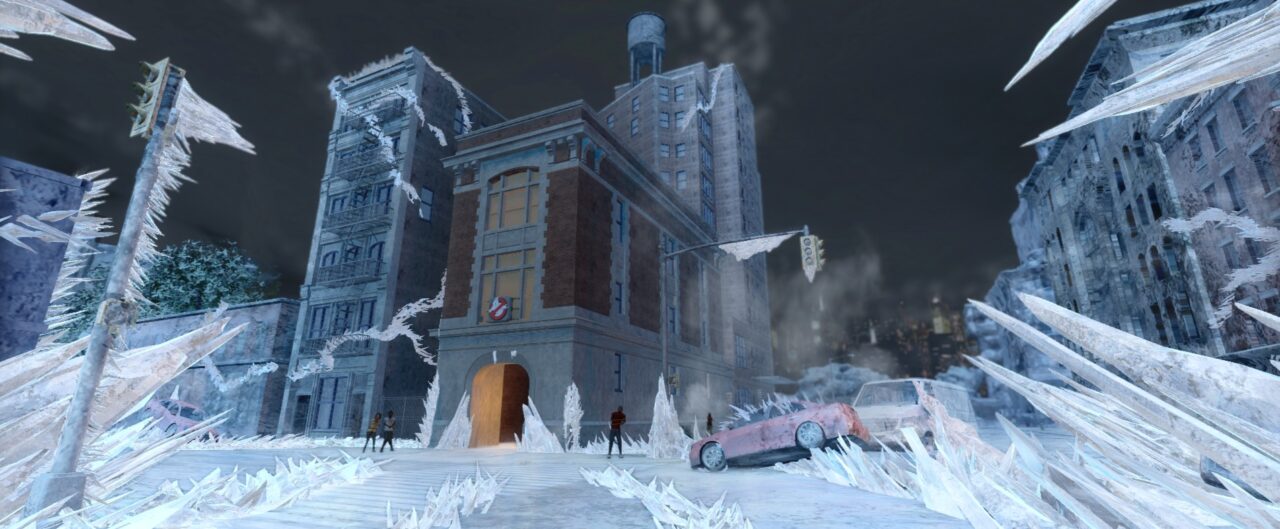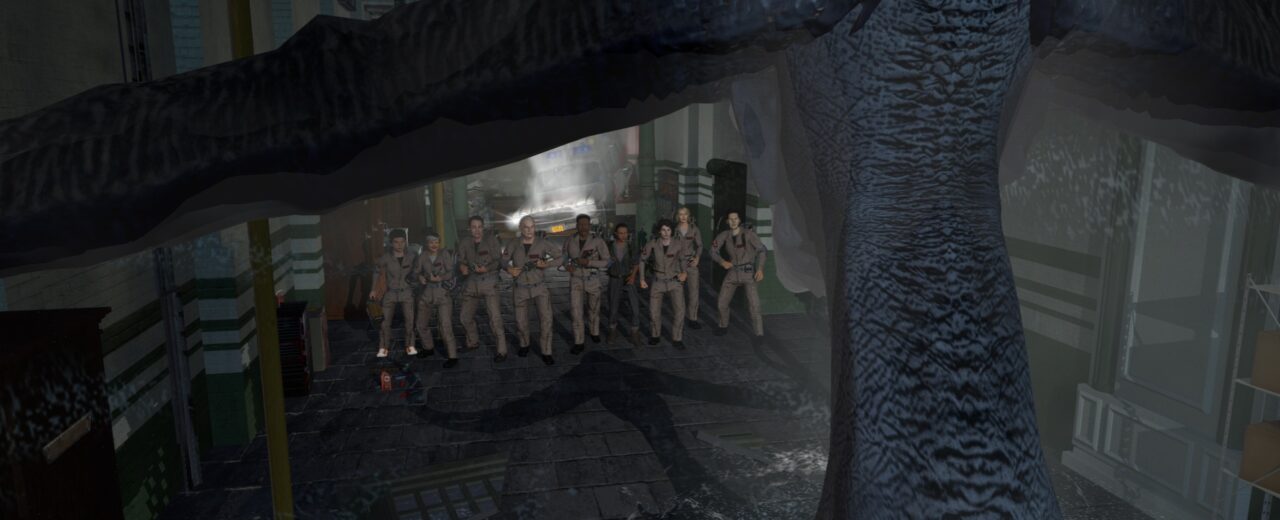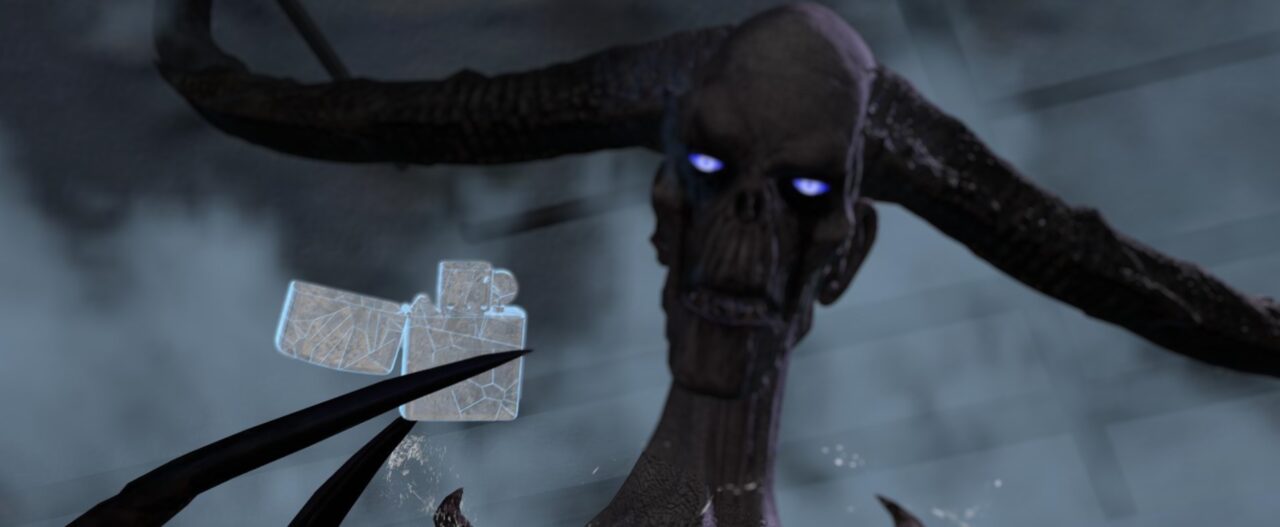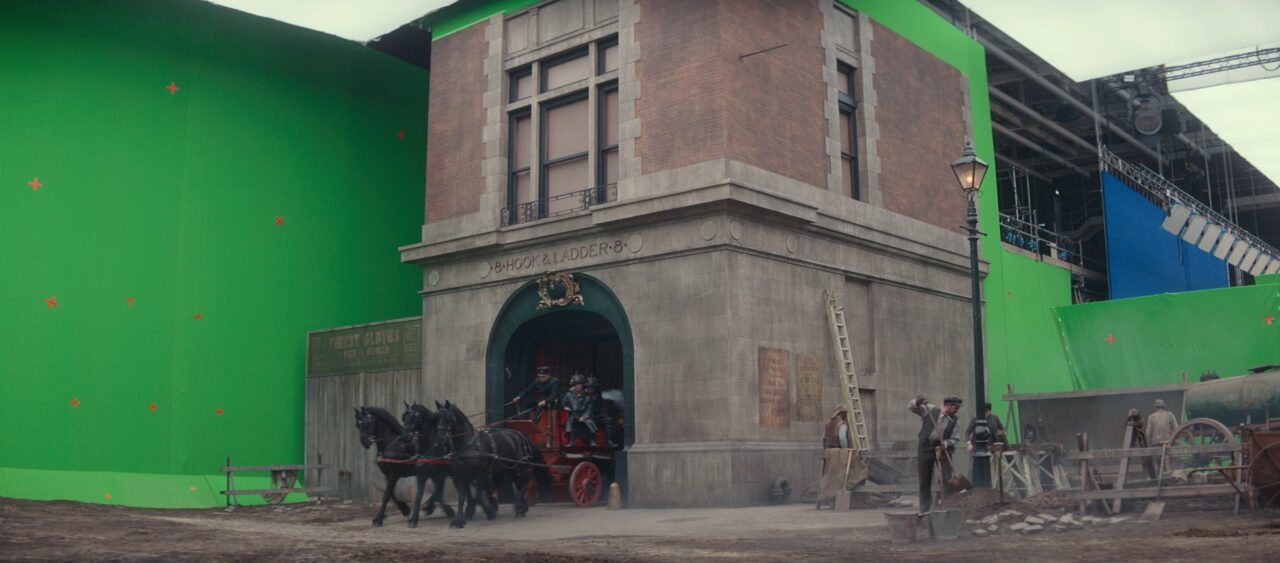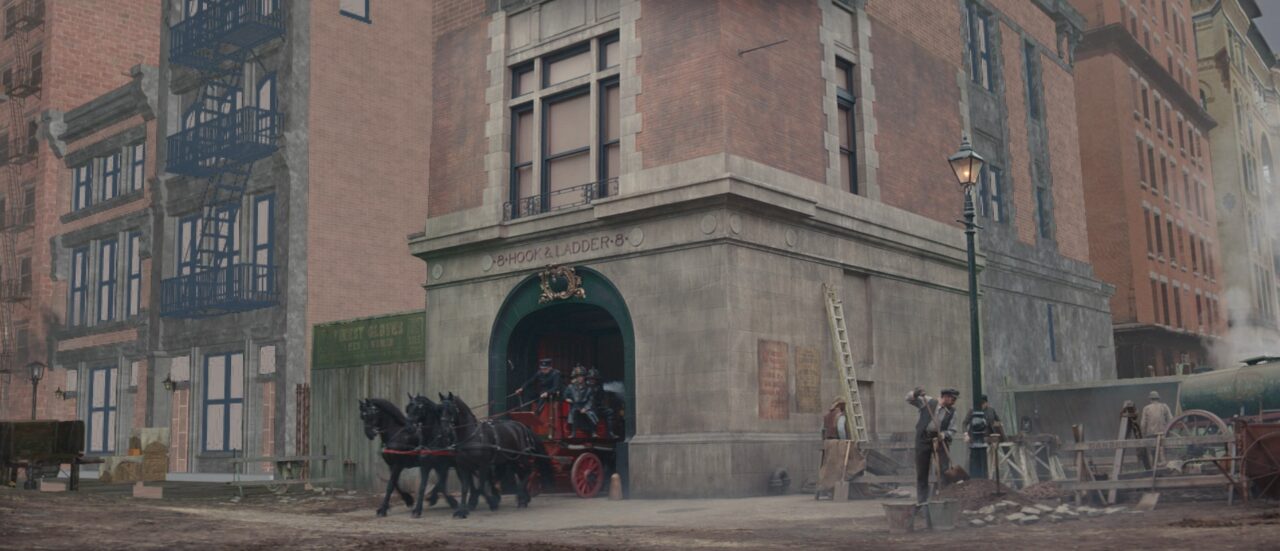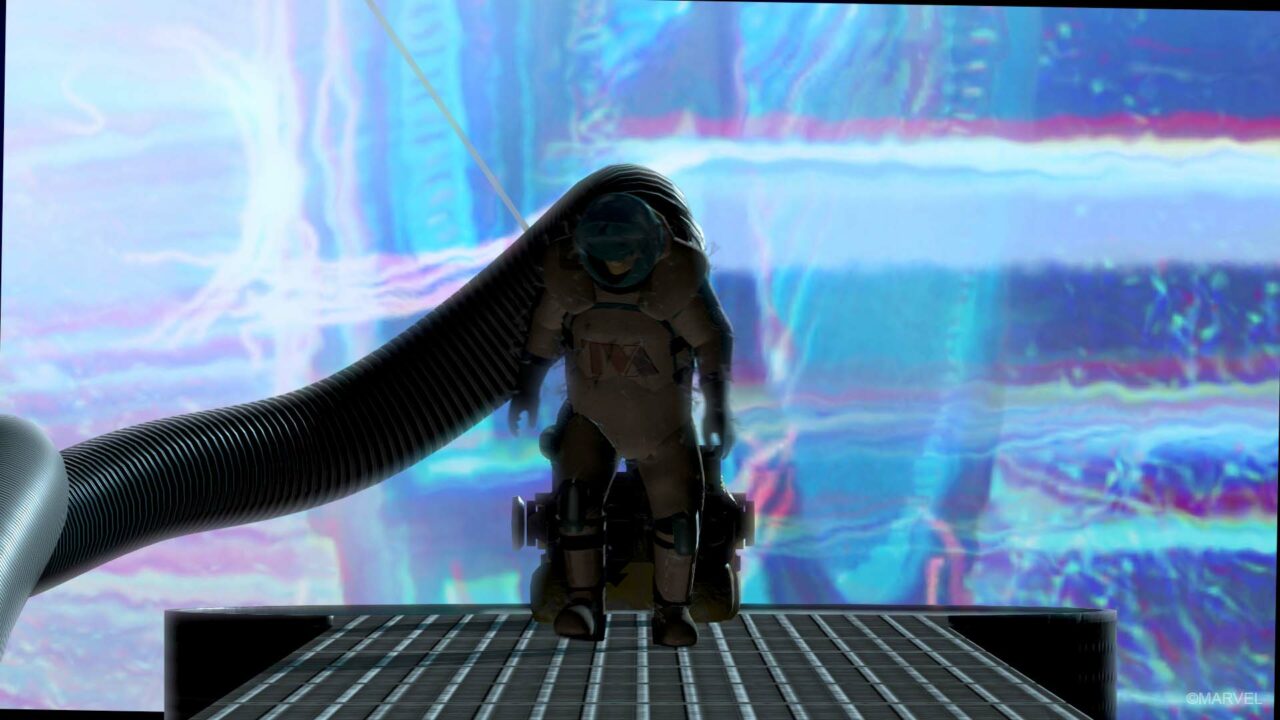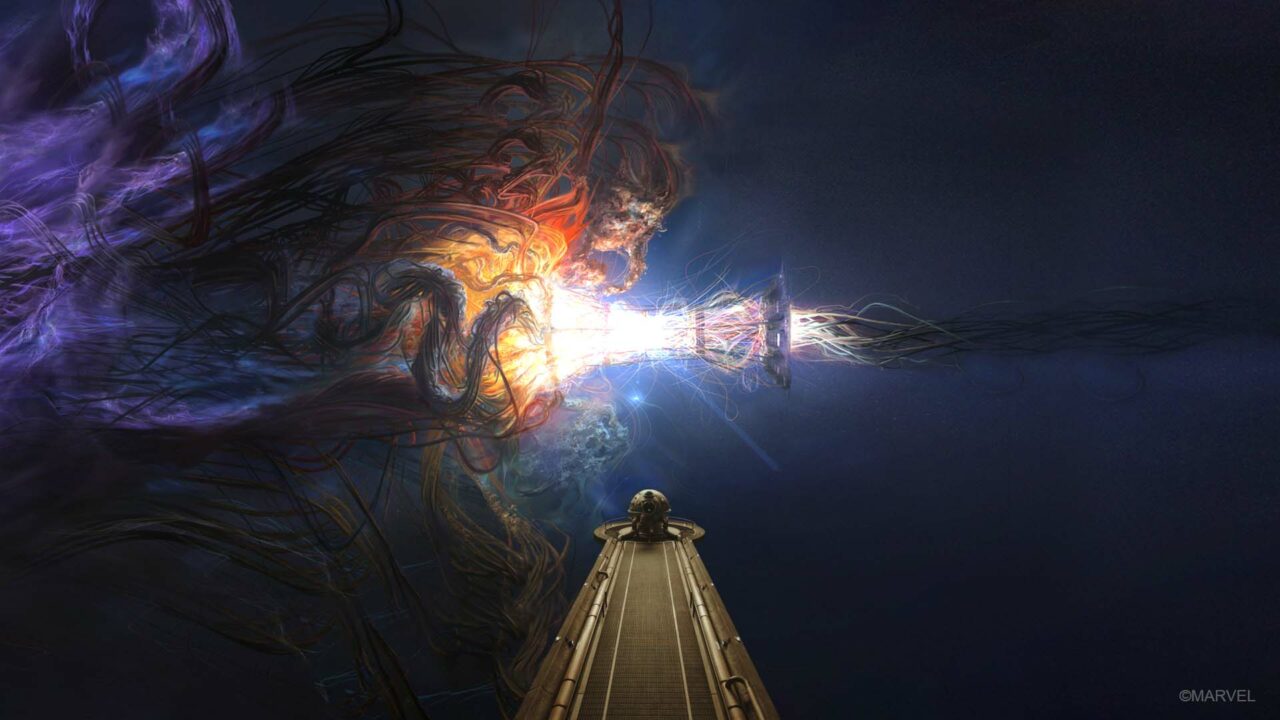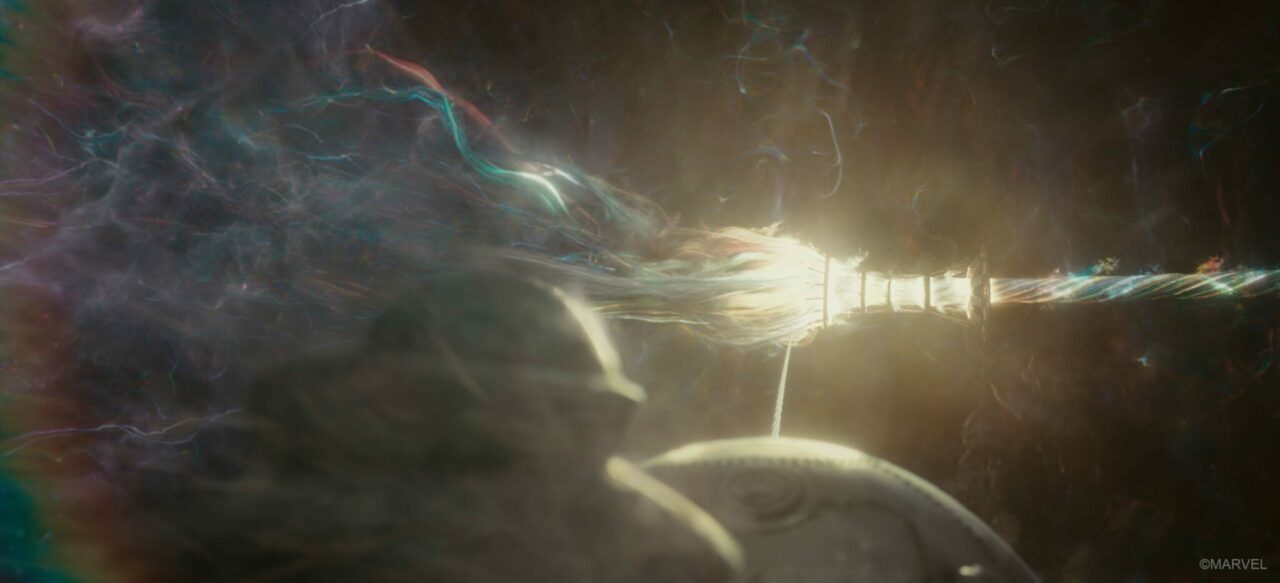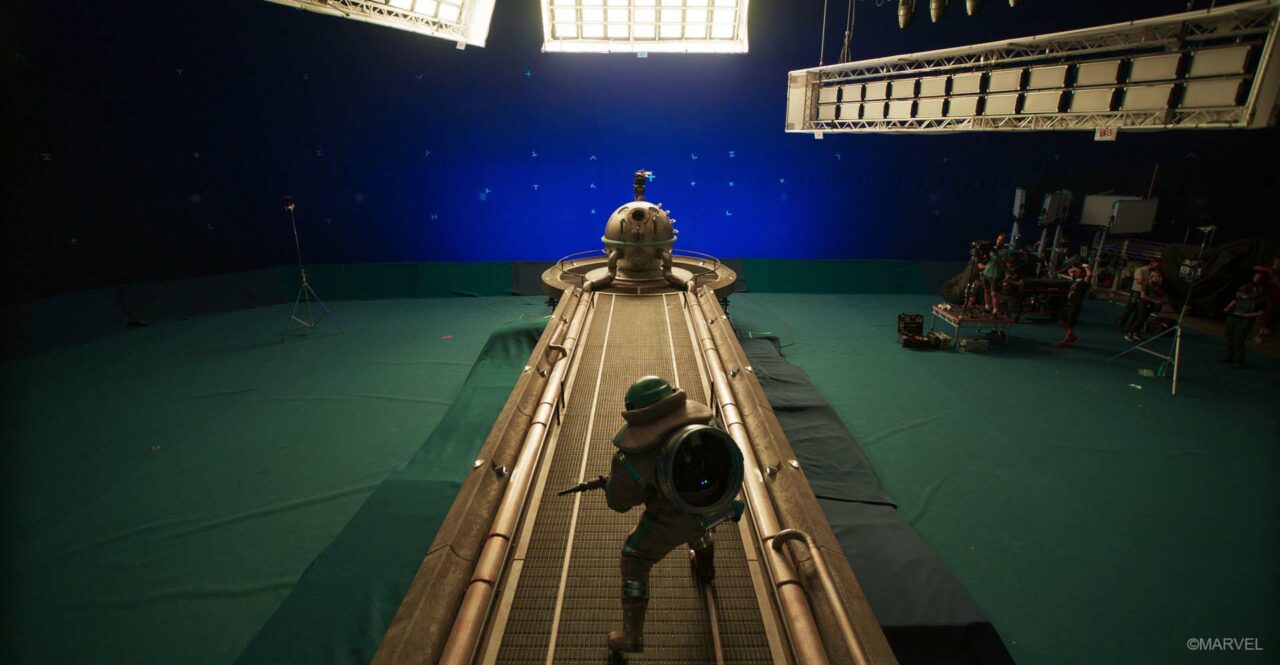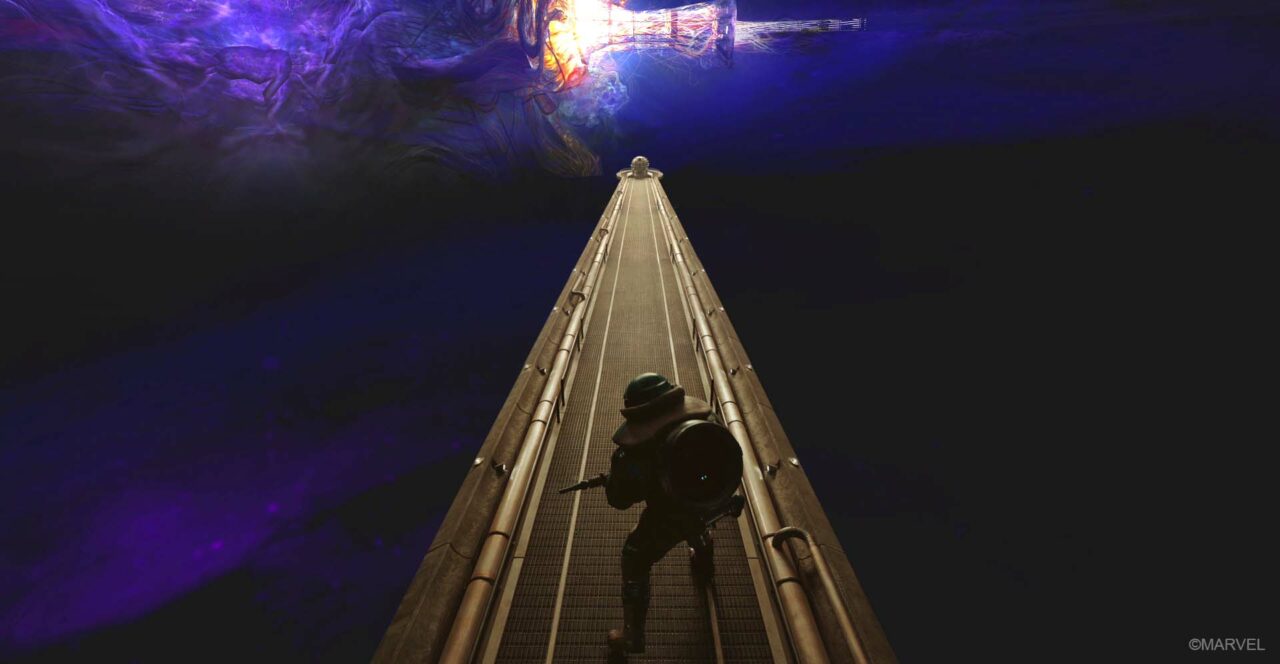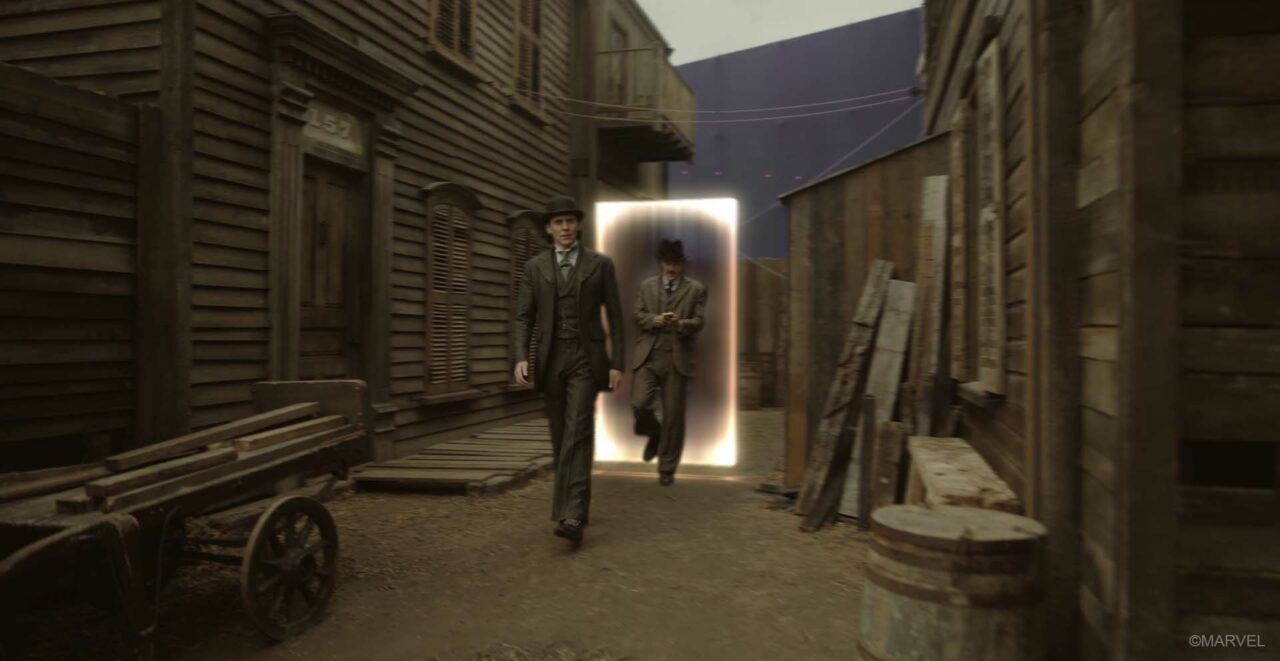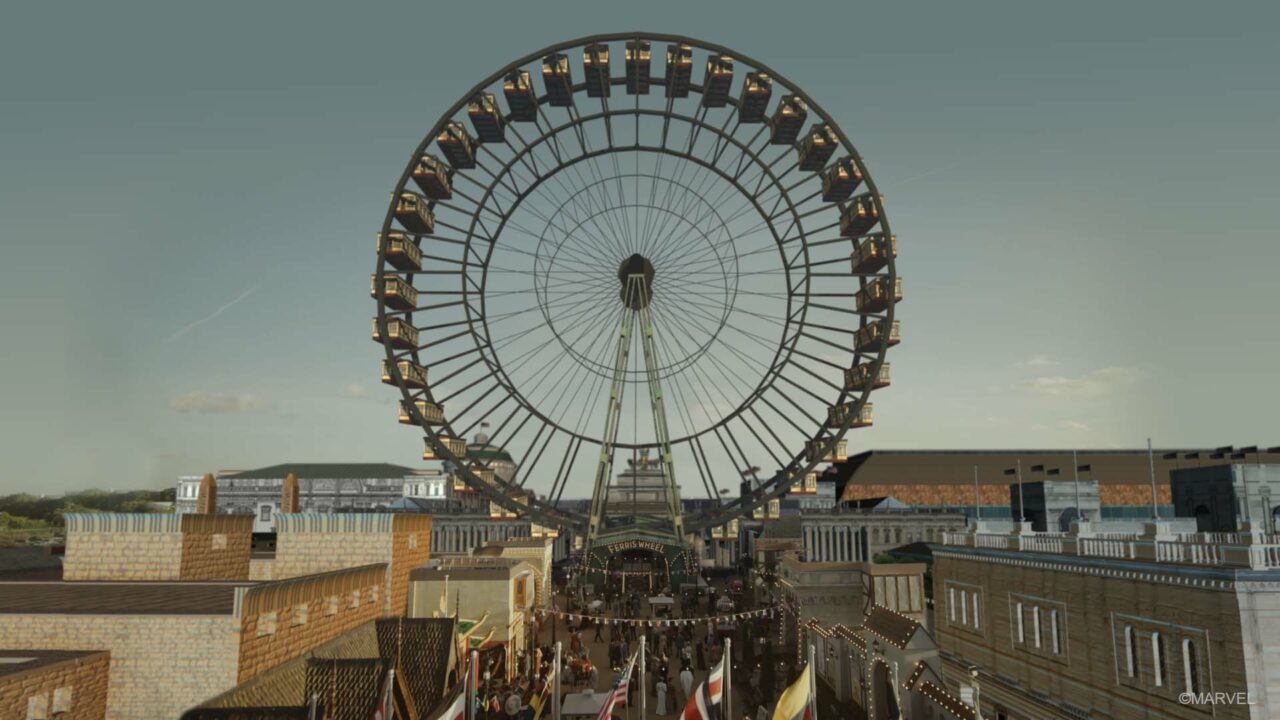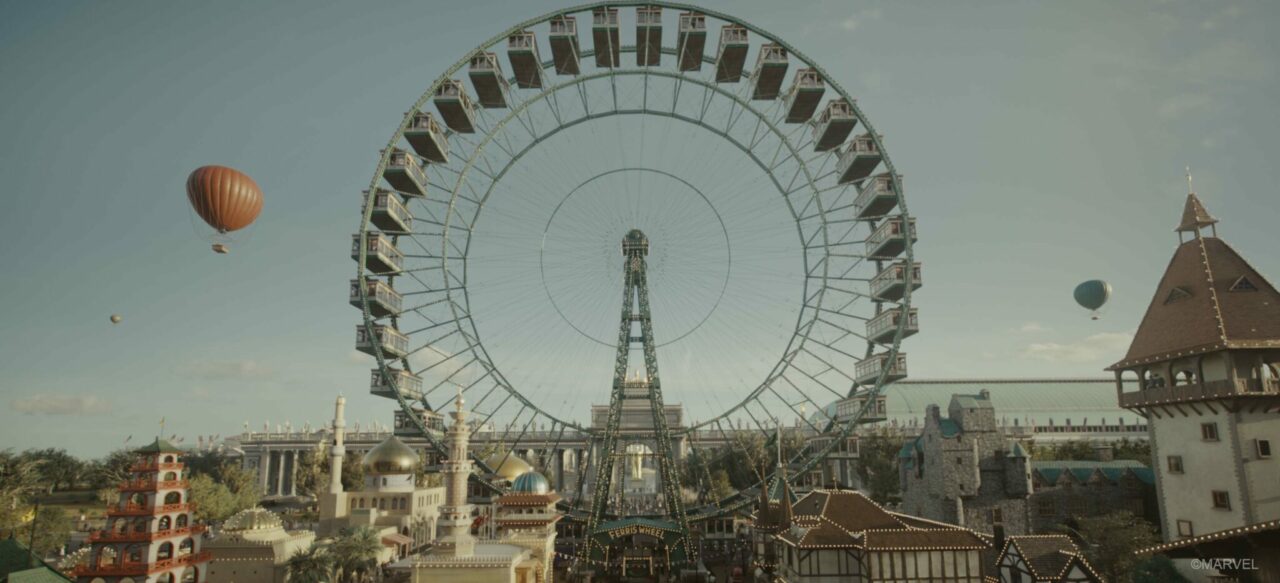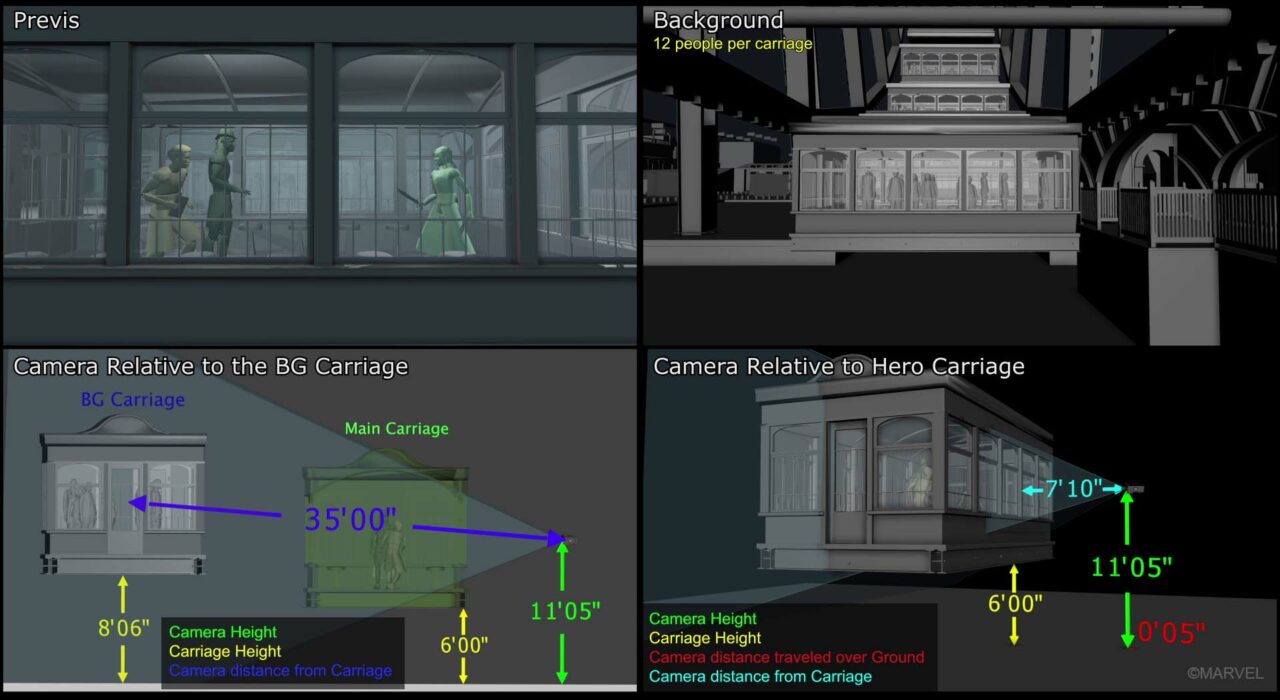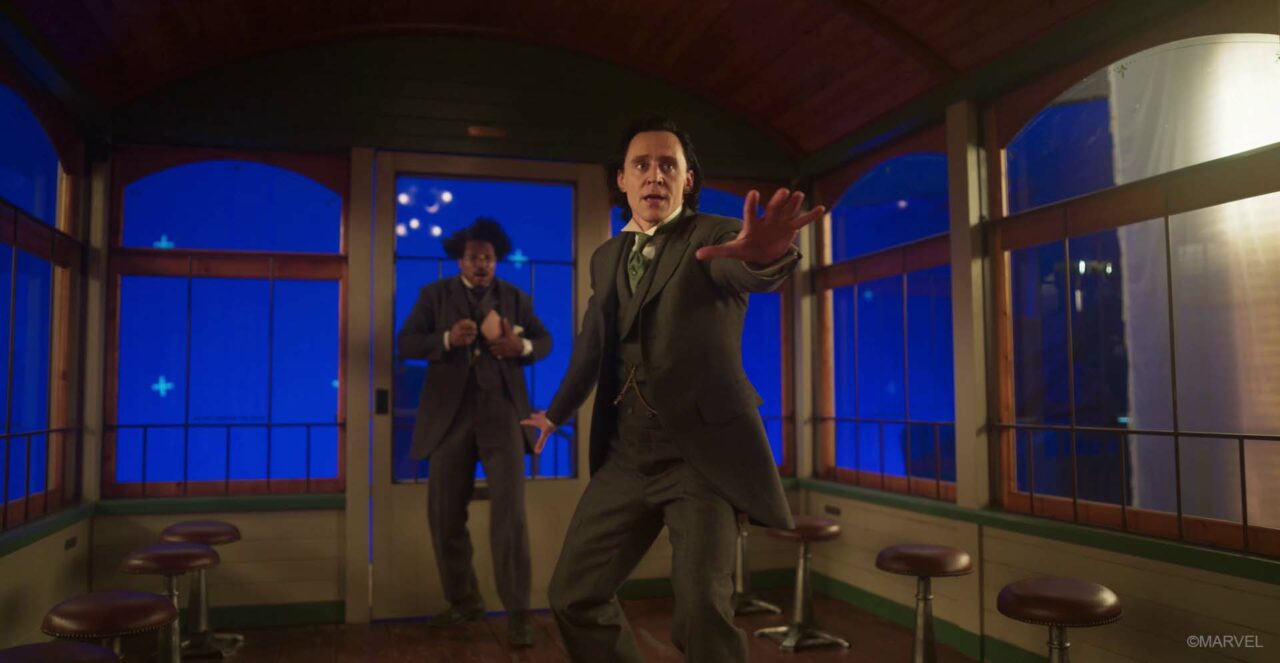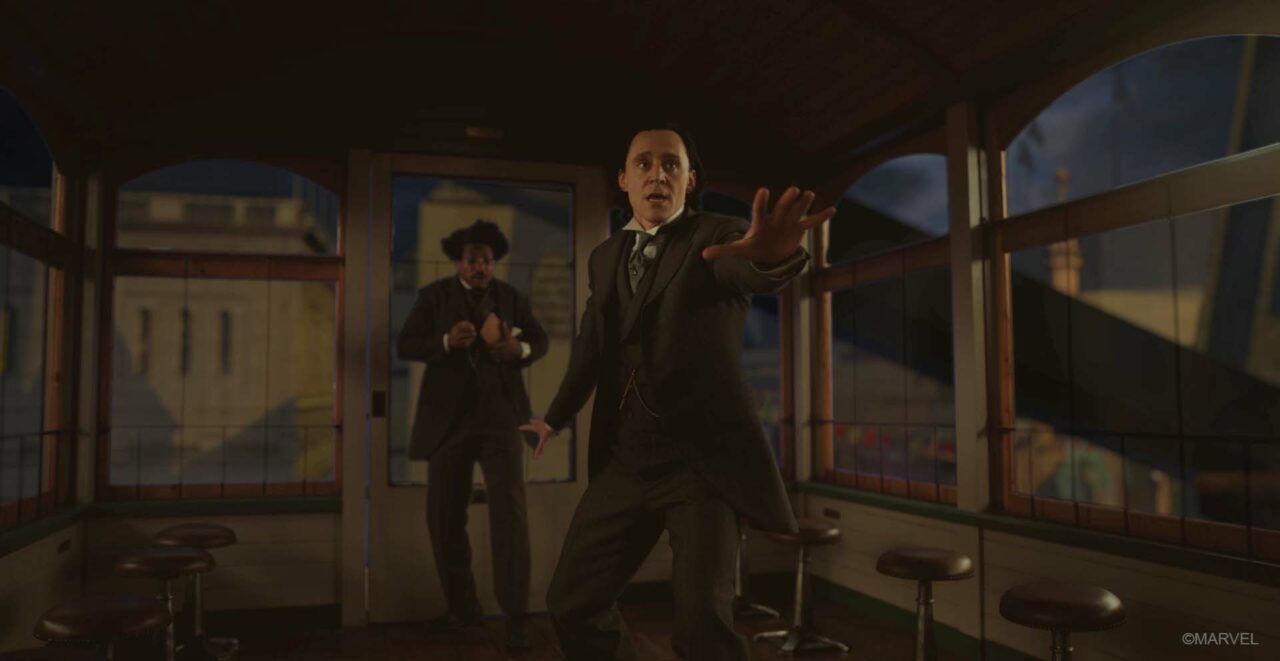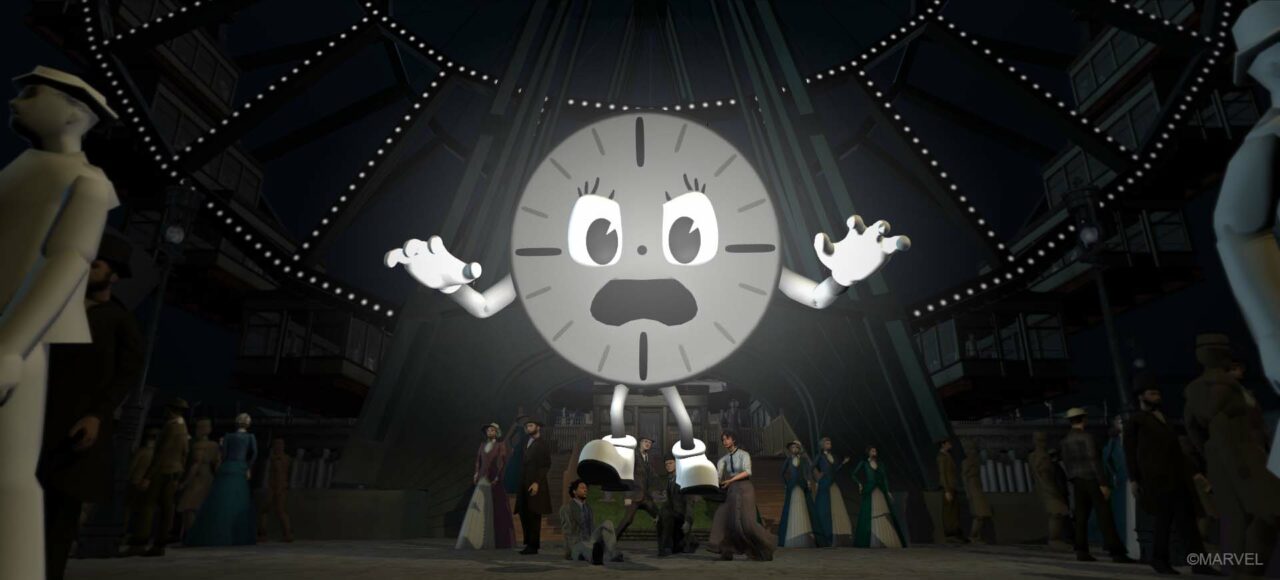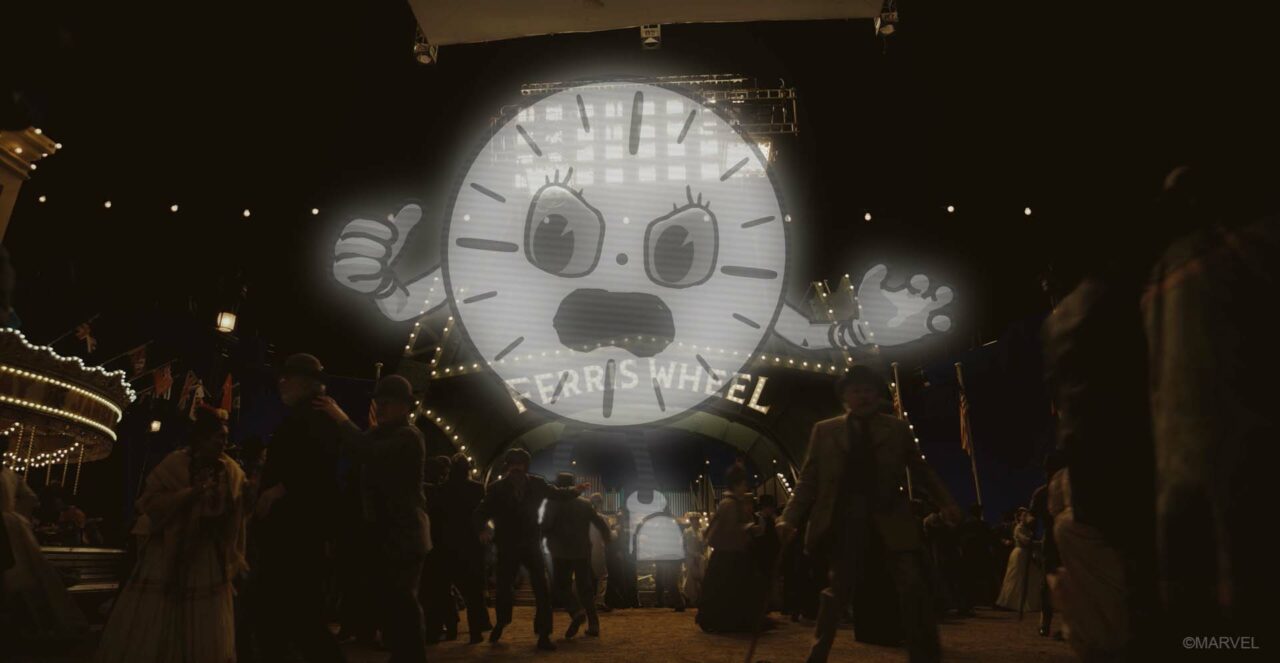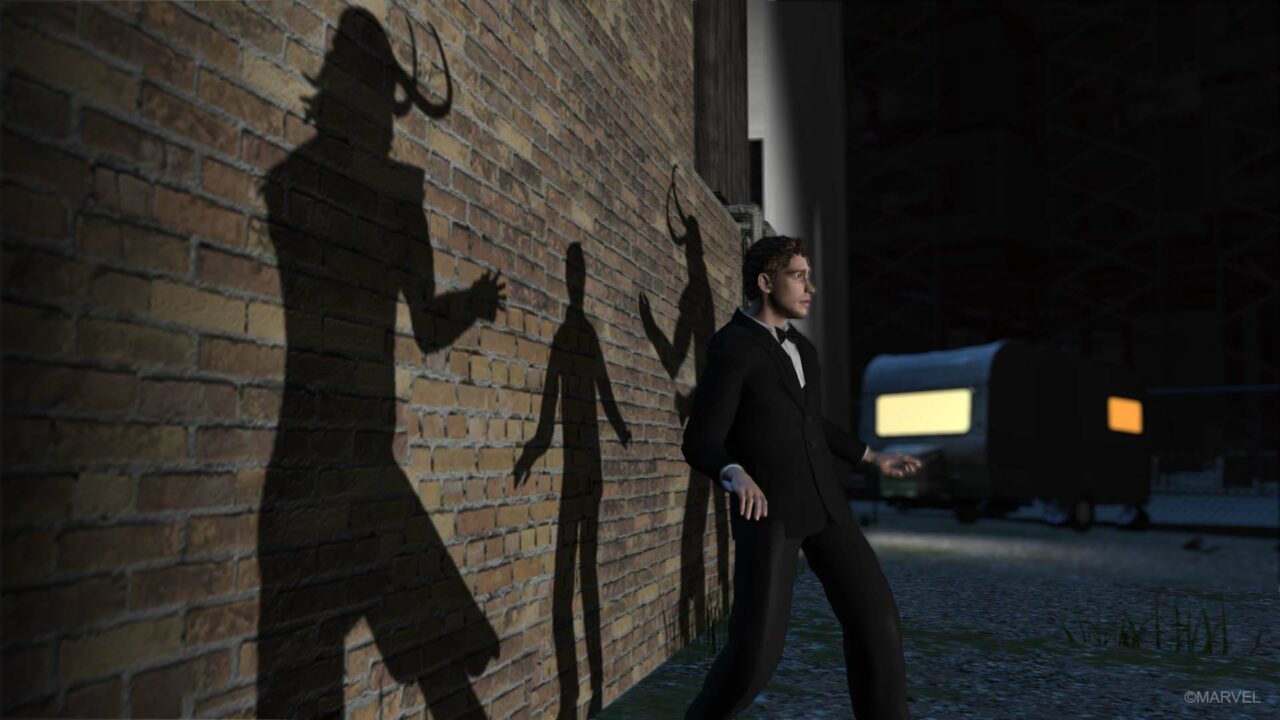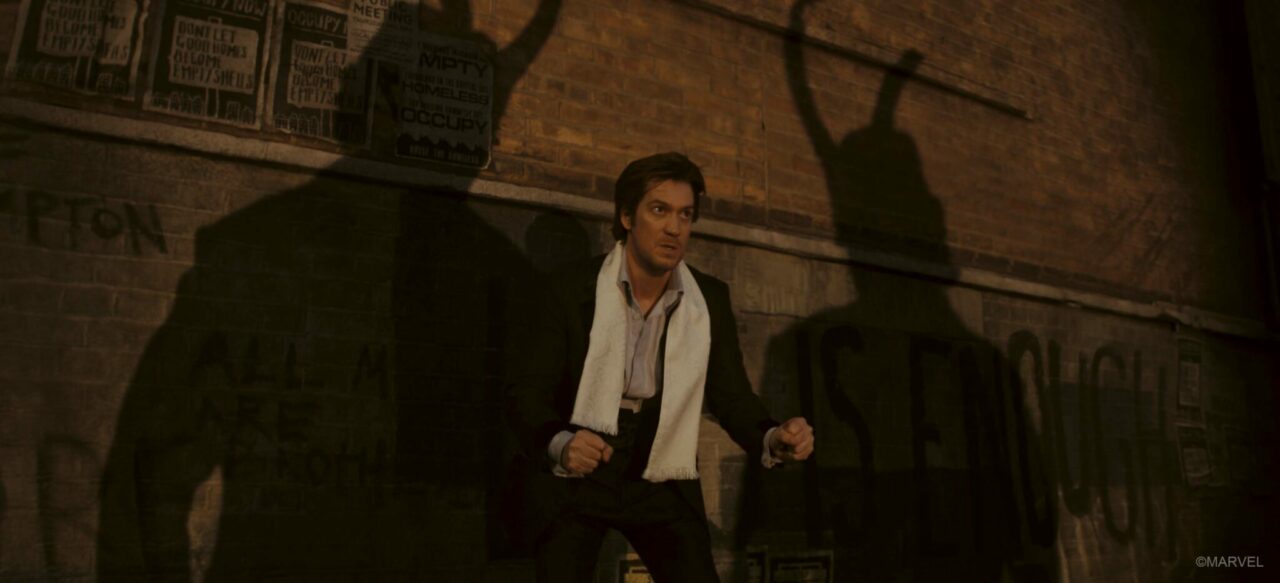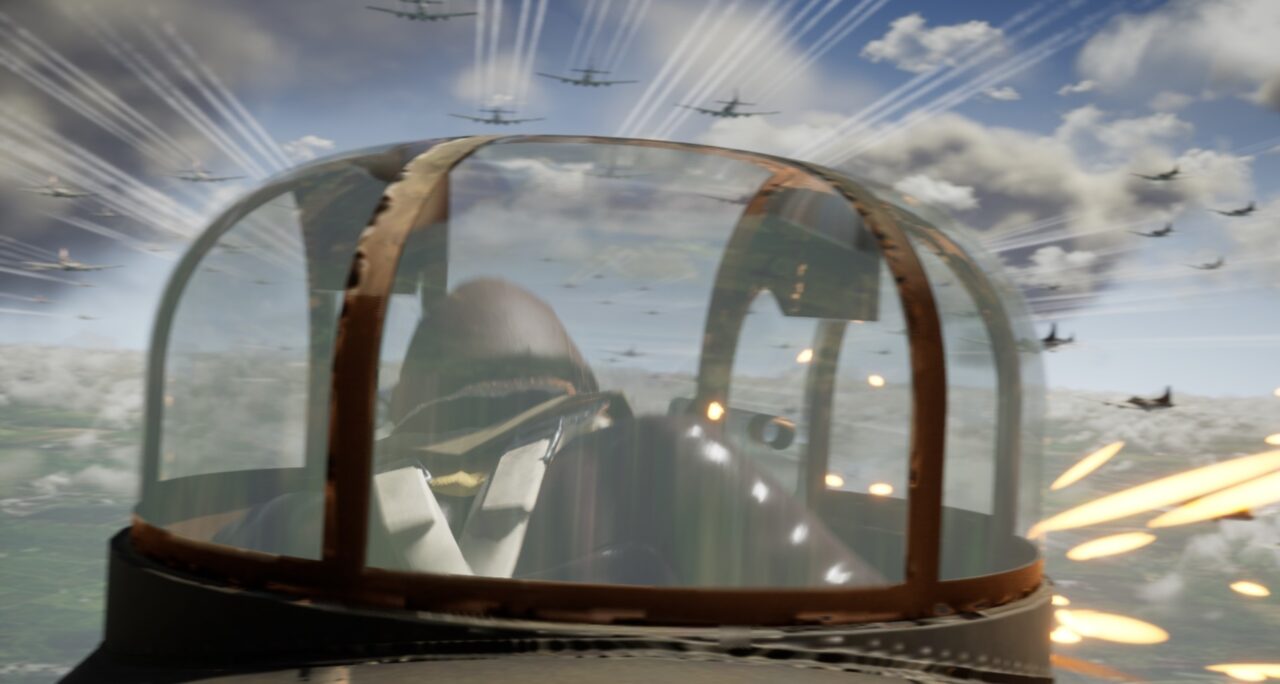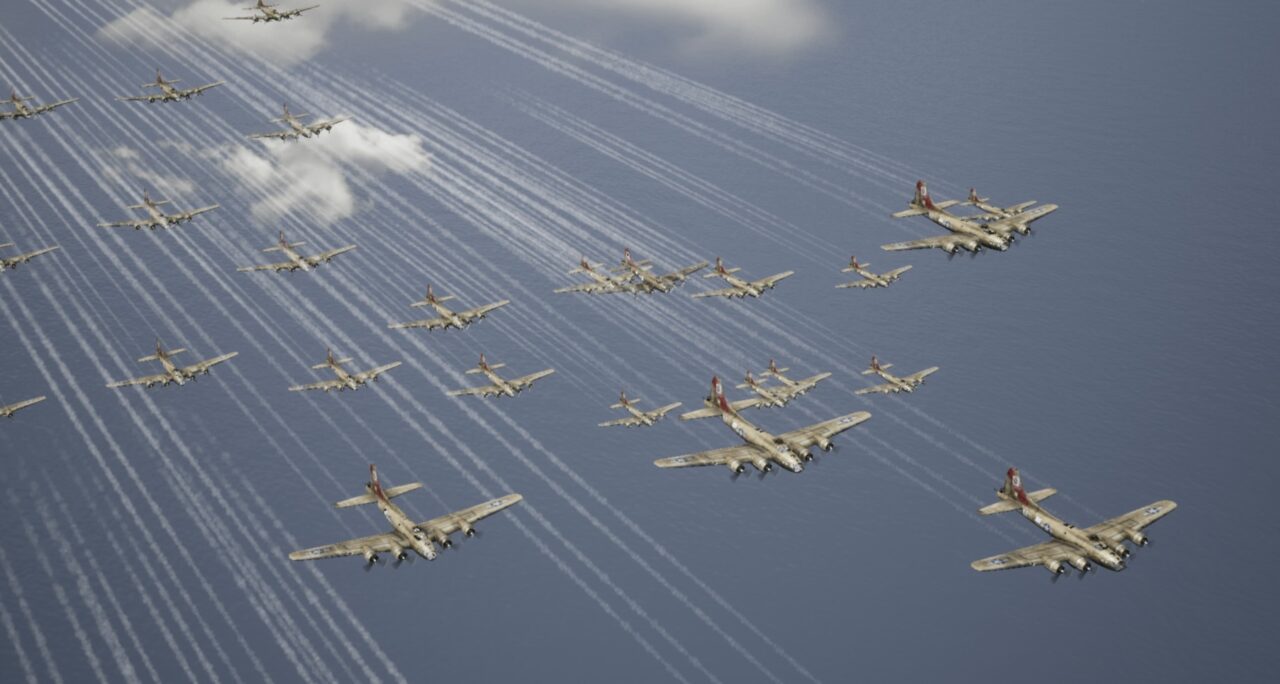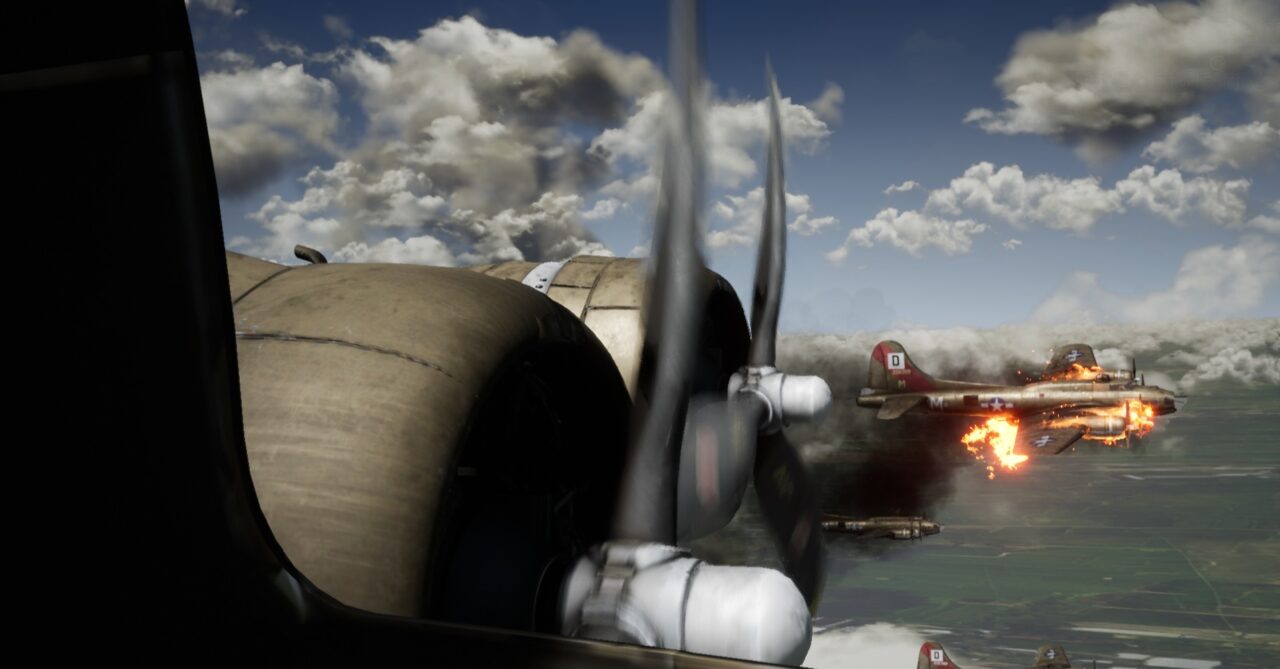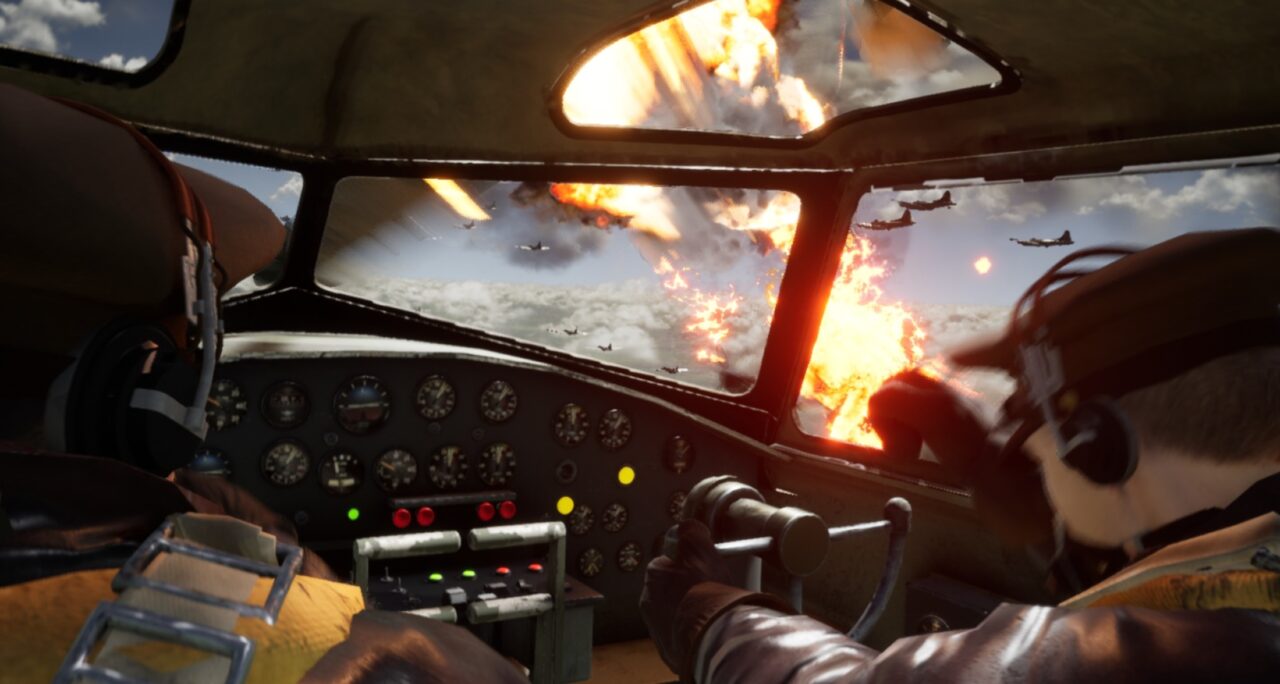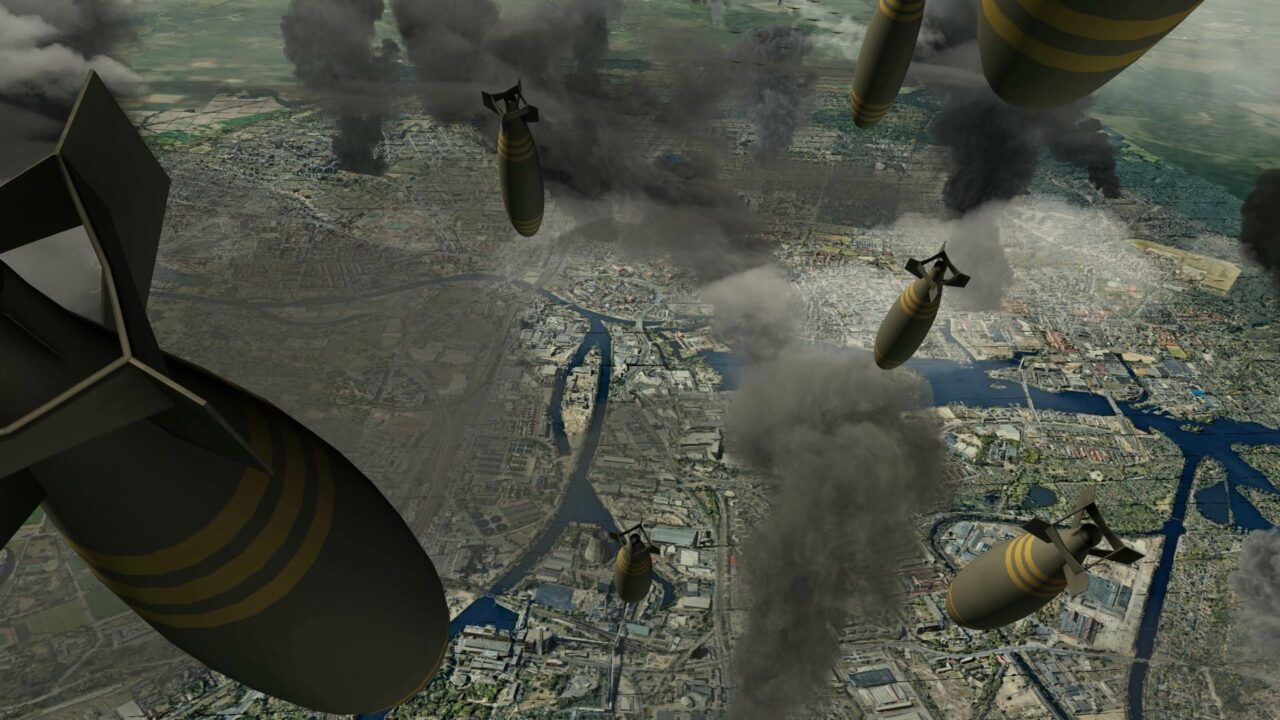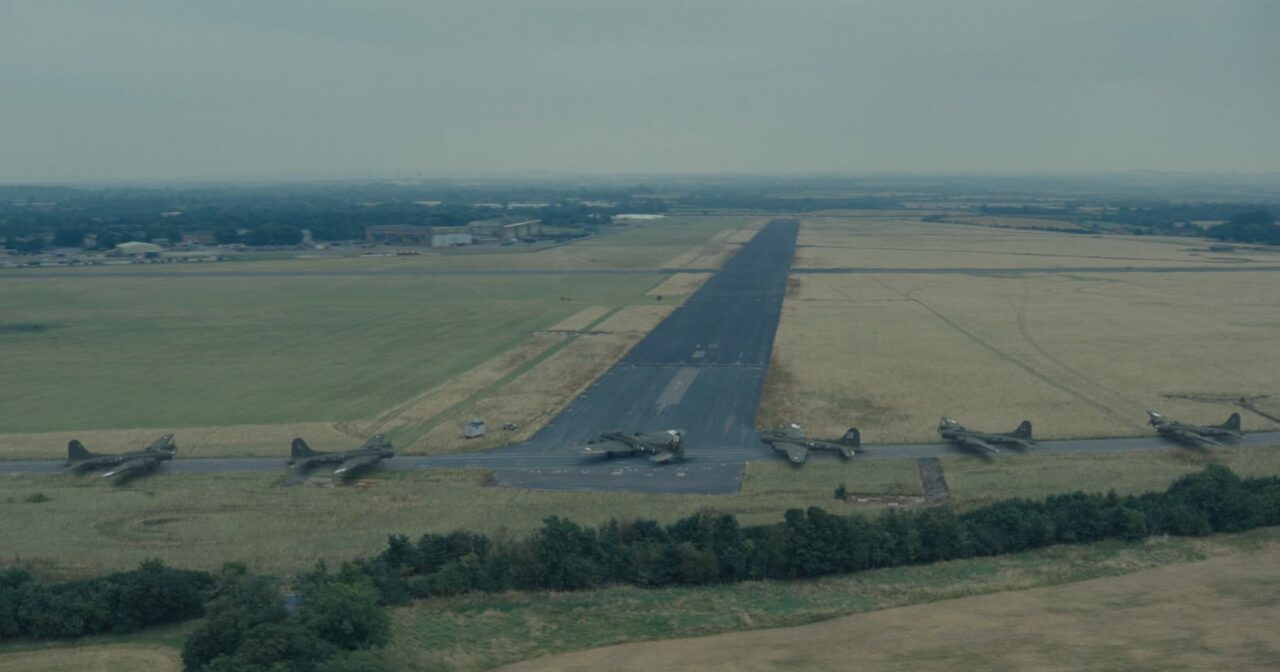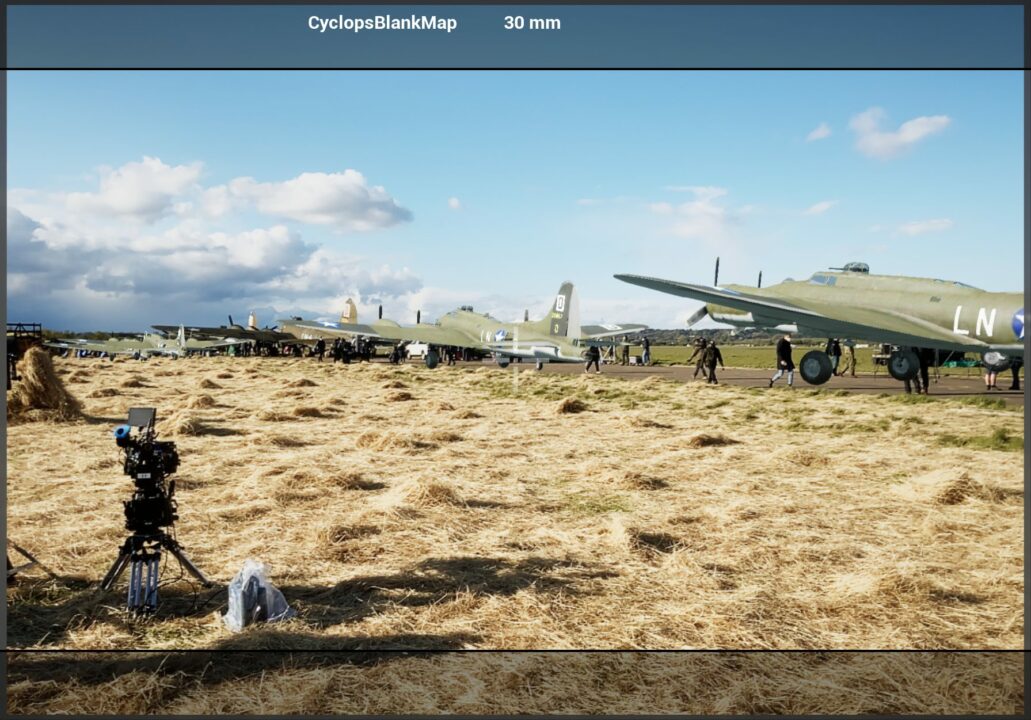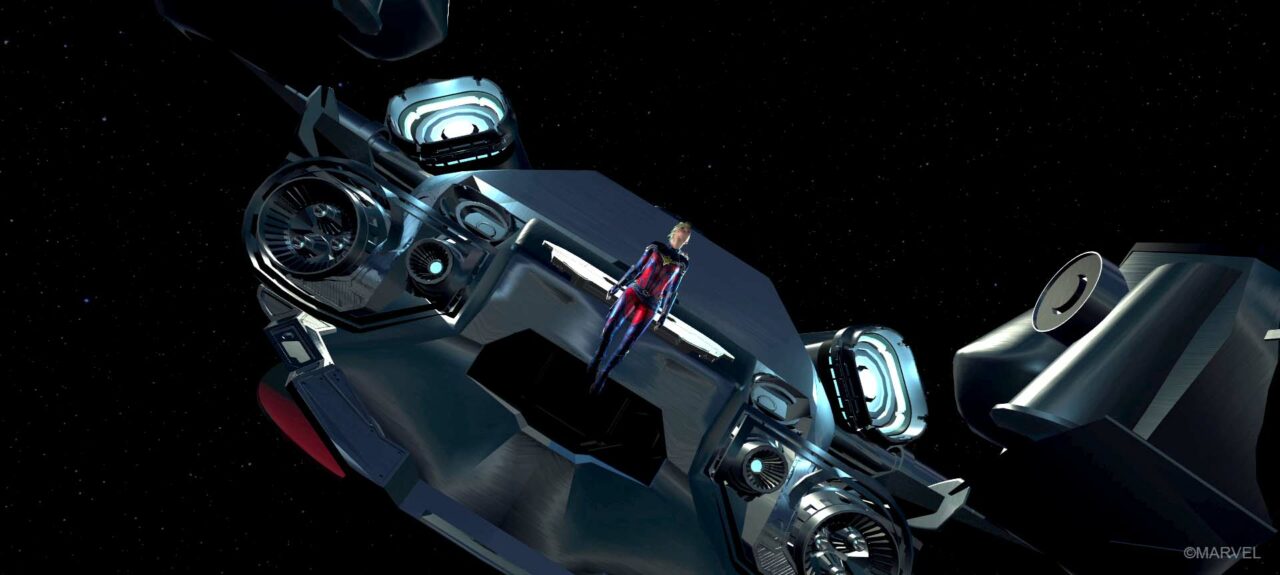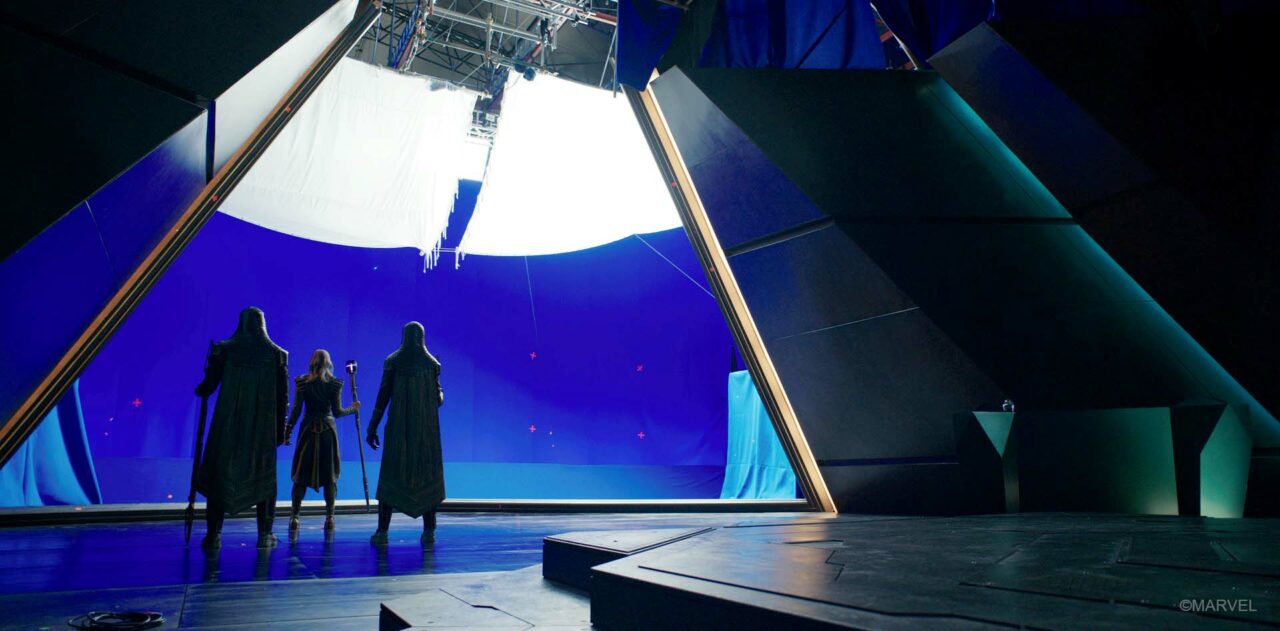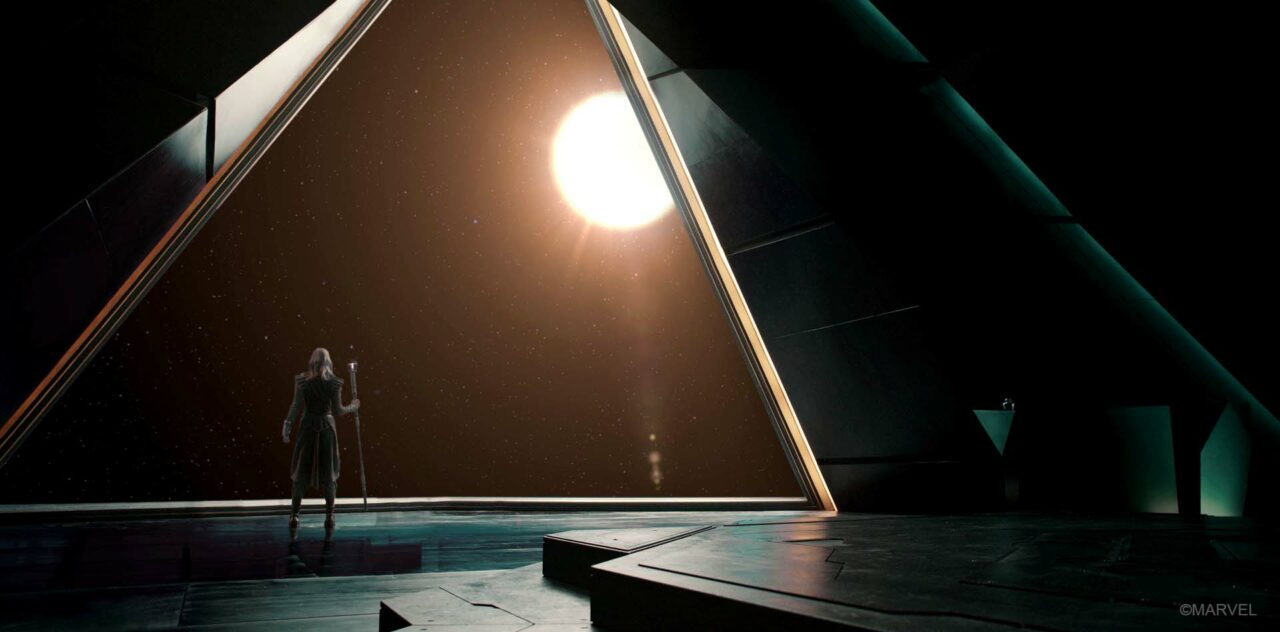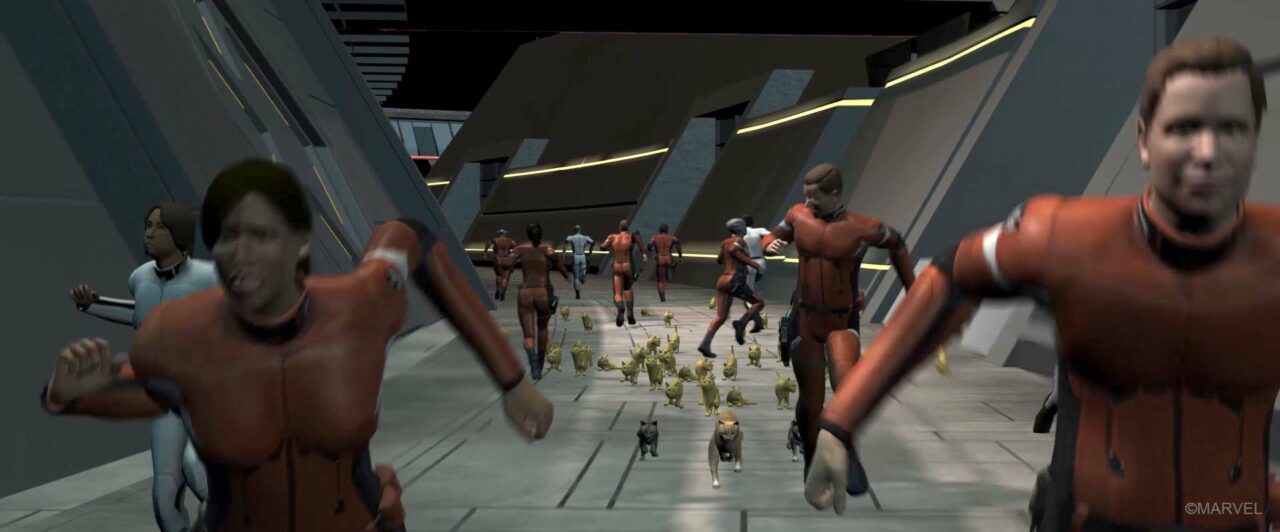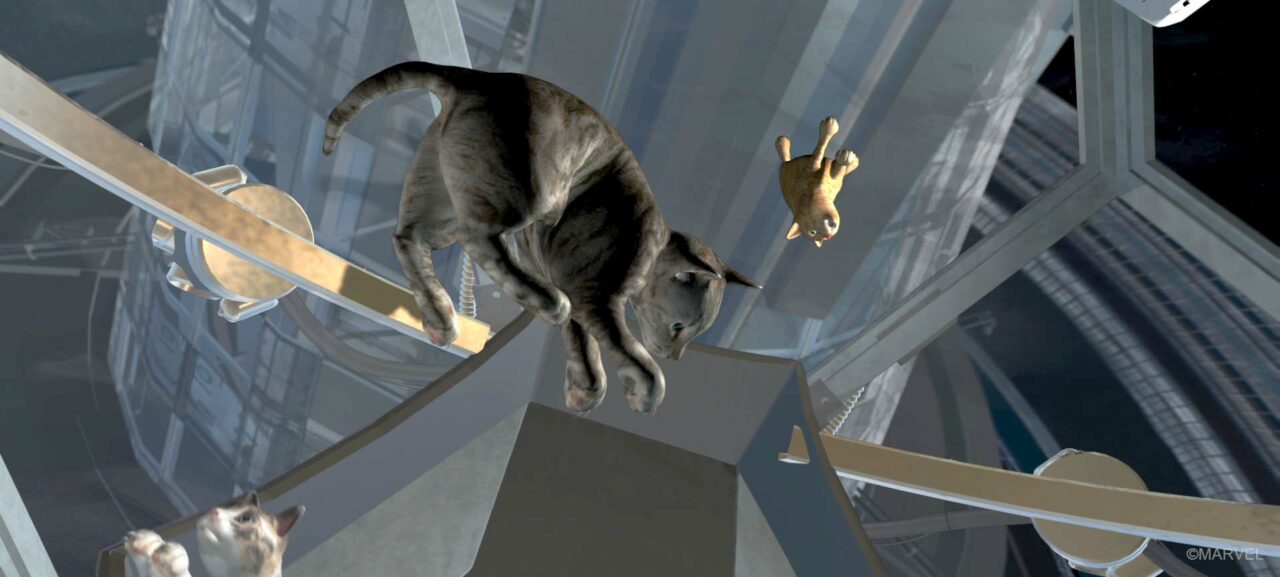Marvel Studio’s most-loved galaxy-savers return to screen in Guardians of the Galaxy Vol. 3, written and directed by James Gunn. The Third Floor again worked with the filmmakers and key crew to visualize shots and sequences to support ideation and planning for the third film in the popular franchise.
During pre-production, the team collaborated with the director, art department, set designers, props department and visual effects department to depict versions of scenes and various aspects of production through previs. VFX Supervisors Stephane Ceretti and Daryl Sawchuk and VFX Producer Susan Pickett were key in guiding the team to visualize a high volume of shots covering most of the film, many of which involved visualizing integration of visual effects and CG characters.
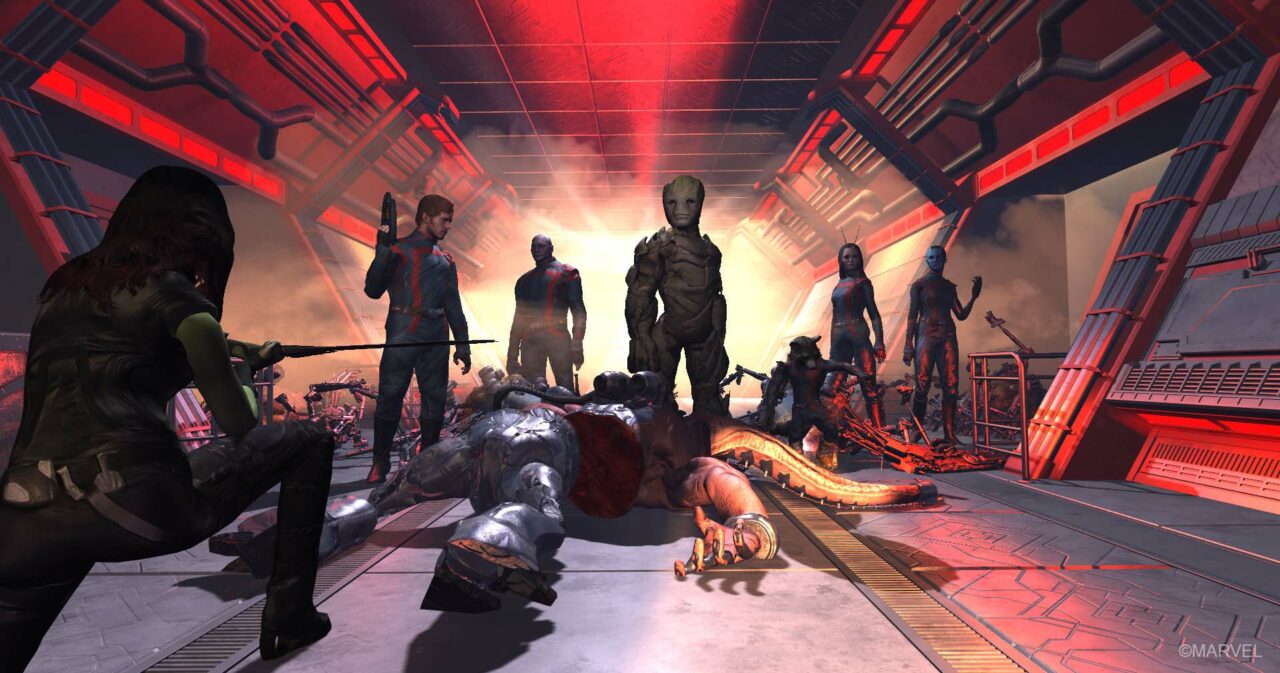
The Guardians of the Galaxy stand strong after defeating Octo-Hyena. Previs frame, The Third Floor @MARVEL
“Animated characters are essential elements of the storyline in a Guardians film, and this was especially the case for Guardians of the Galaxy: Vol 3,” said Jim Baker, Visualization Supervisor. “The design of the action, with CG characters who interact freely with live actors, is a unique part of the franchise and always a rewarding challenge when visualizing a shot.”
“There’s a lot of interaction between live and CG characters across a large amount of screentime,” commented Visualization Supervisor Caitlin Rupert. “It’s to the point where CG characters are essentially treated like regular characters that simply need to be visualized naturally within the scene both physically and aesthetically. When visualizing characters, we needed to make sure that the connection between real and VFX entities was convincing and brought out the emotions and composition that the filmmakers envisioned for the shots. This was a particular challenge throughout postvis work.”
One example of this, Rupert notes, is the opening/main title sequence of Rocket in the streets of Knowhere. “It’s essentially a long walk-and-talk involving multiple CG characters with varying numbers of limbs and gravitational directions mixed in among several live actors.”
Another example, Rupert continues, is postvis work where Evo instructs young Rocket. “The connection had to feel real. The artists had to carefully integrate our previs Rocket character into the plates with the actor, who performed the scene with a ‘stuffie’ stand-in. The visualized shot needed to convey the connection and emotion between the two performances.”
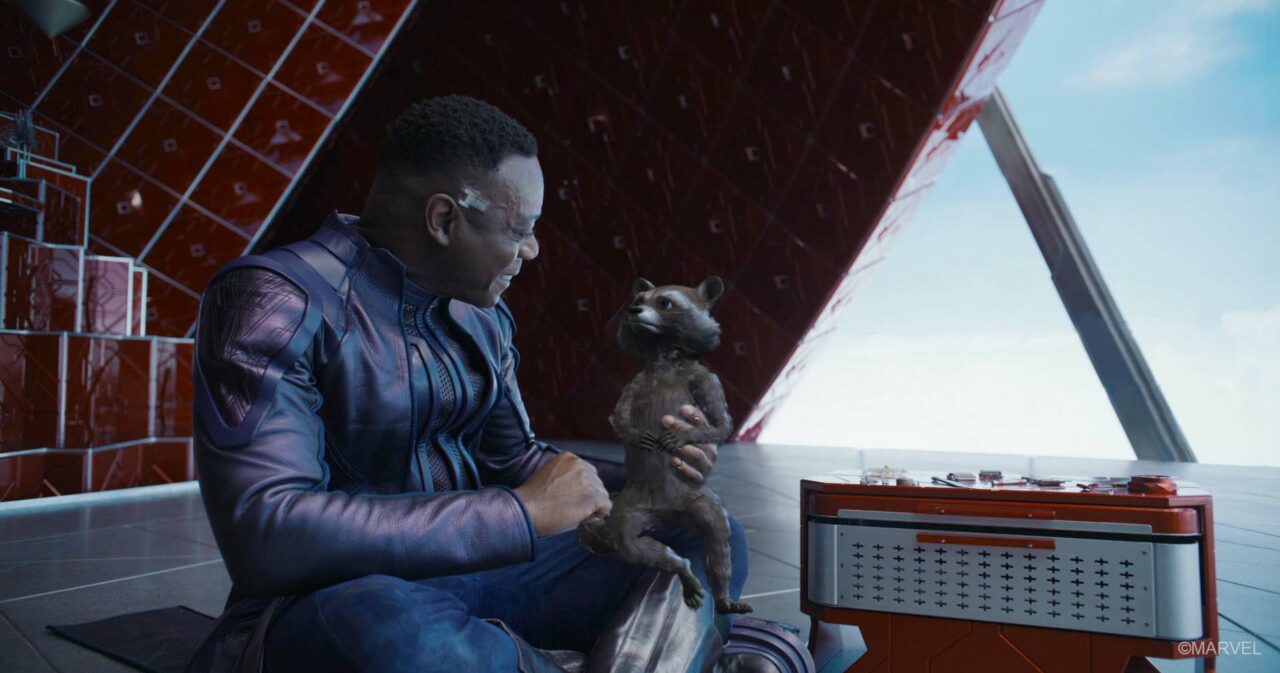
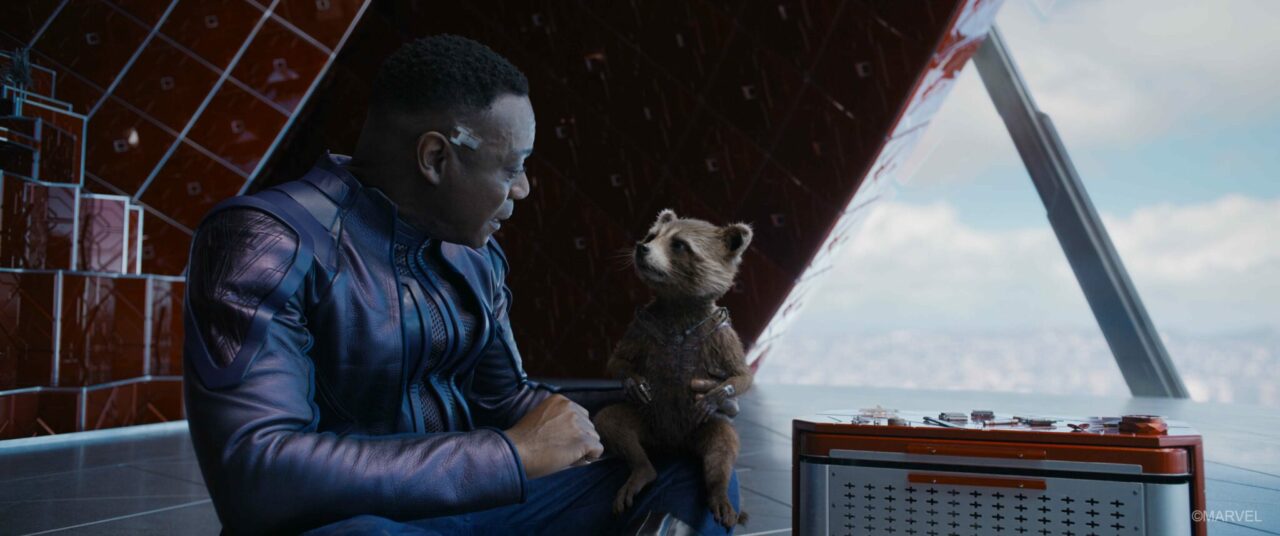
Rocket is visualized through postvis in a moment from the past. Postvis by The Third Floor (above). @MARVEL
Final shot by the VFX team (below). @MARVEL
Action for a range of fight scenes was quickly blocked by bringing motion capture of the stunt team into previs. Multiple environments – from a quirky space-station world on Orgoscope to facilities constructed on a familiar-yet-artificial Counter-Earth had to be visualized and represented as well. One section of action called the Orgo Adventure takes place on a fleshy planetoid. Following initial previs, backgrounds were extensively visualized in post, and techvis helped inform plate shoots with multiple actors.
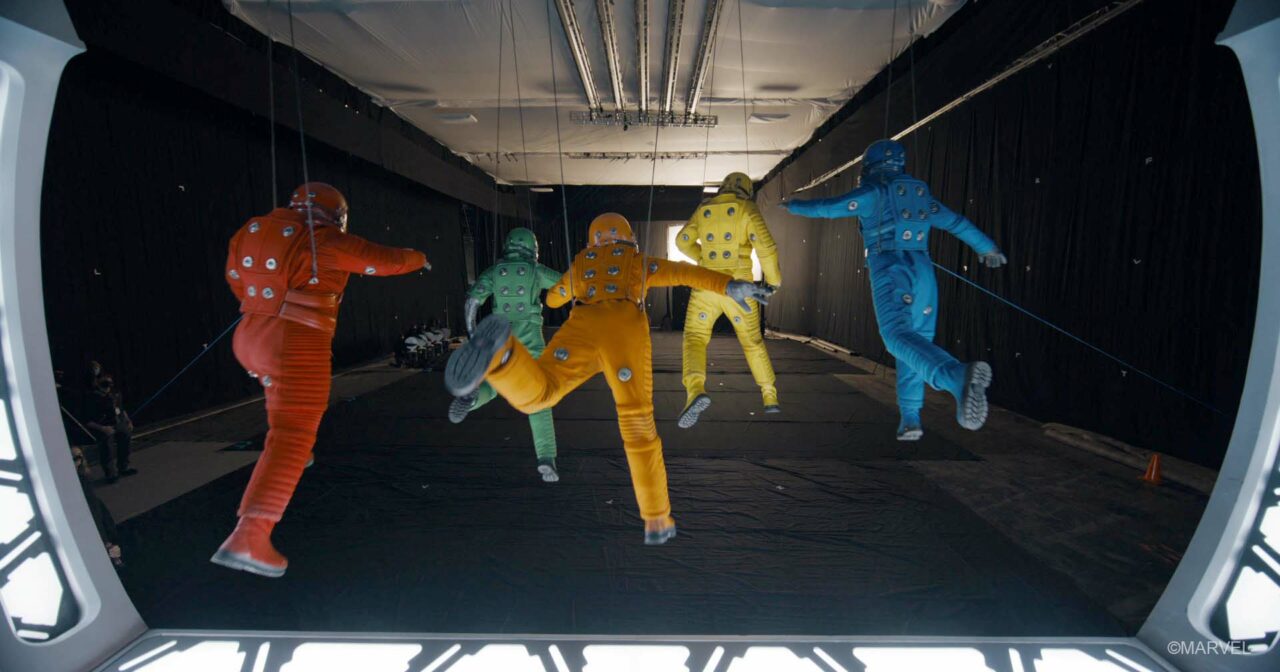
Plate photography of Drax, Nebula, Mantis, Star-Lord and Gamora floating toward the Orgoscope. @MARVEL
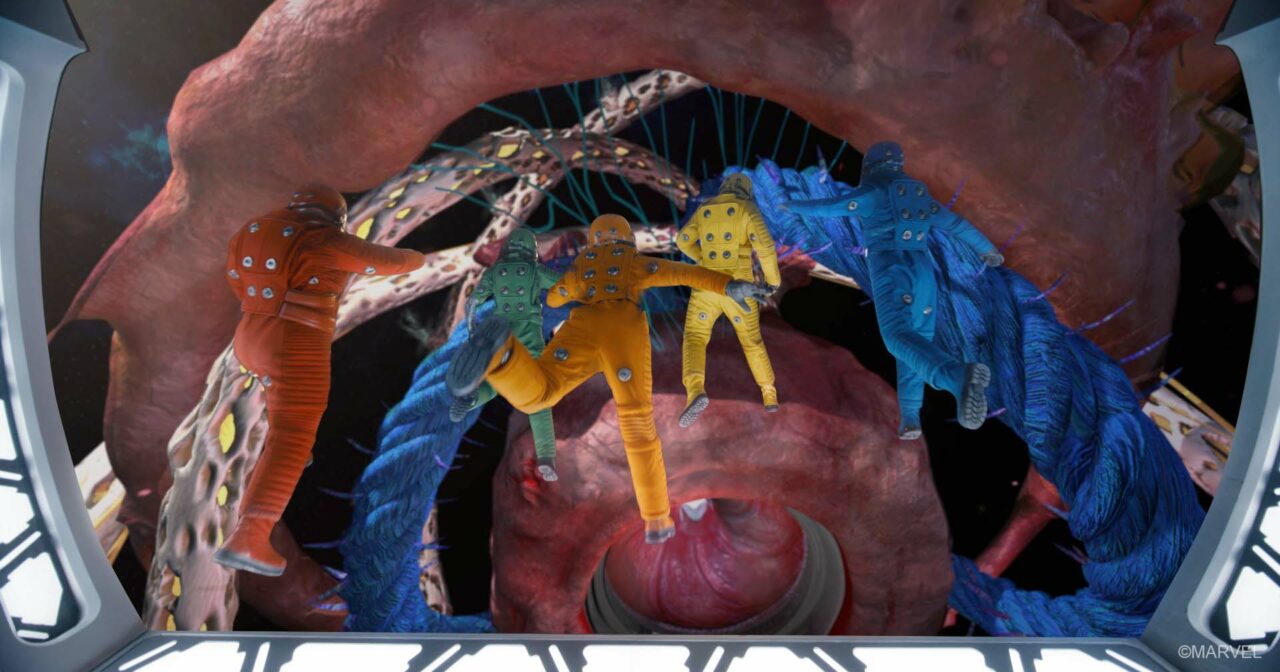
Shot with backdrop visualized in postvis. @MARVEL
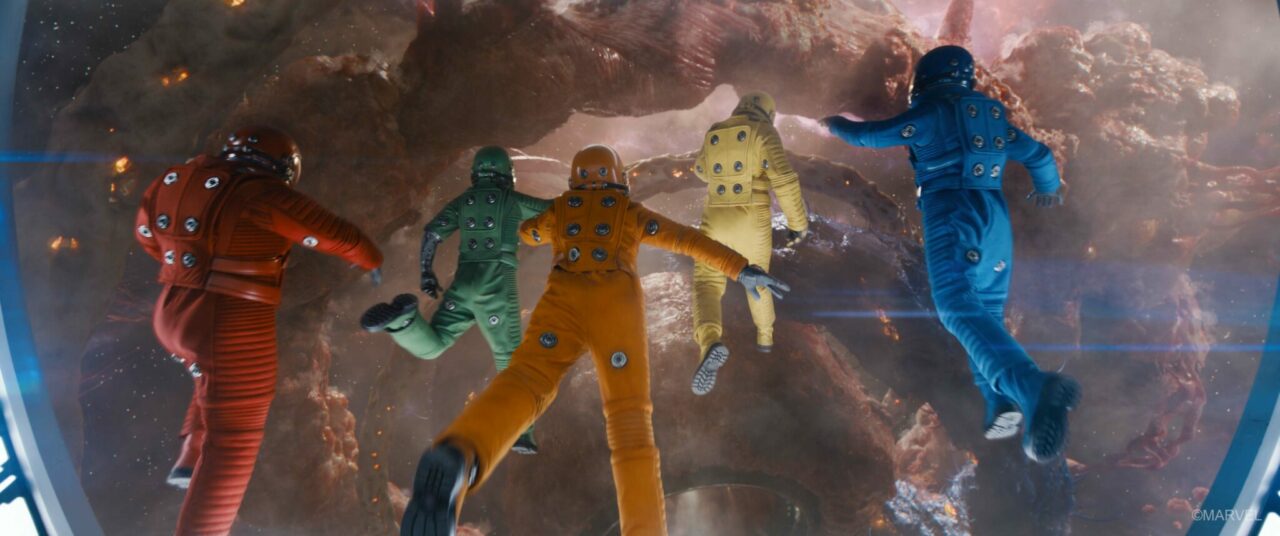
Final shot by the VFX team. @MARVEL
Various action scenes with CG backgrounds, effects and characters were visualized across the third act in previs and postvis passes. ‘Vis was used to represent scale, placement and shot composition with live actors and large-scale creatures, like the Abilisks.
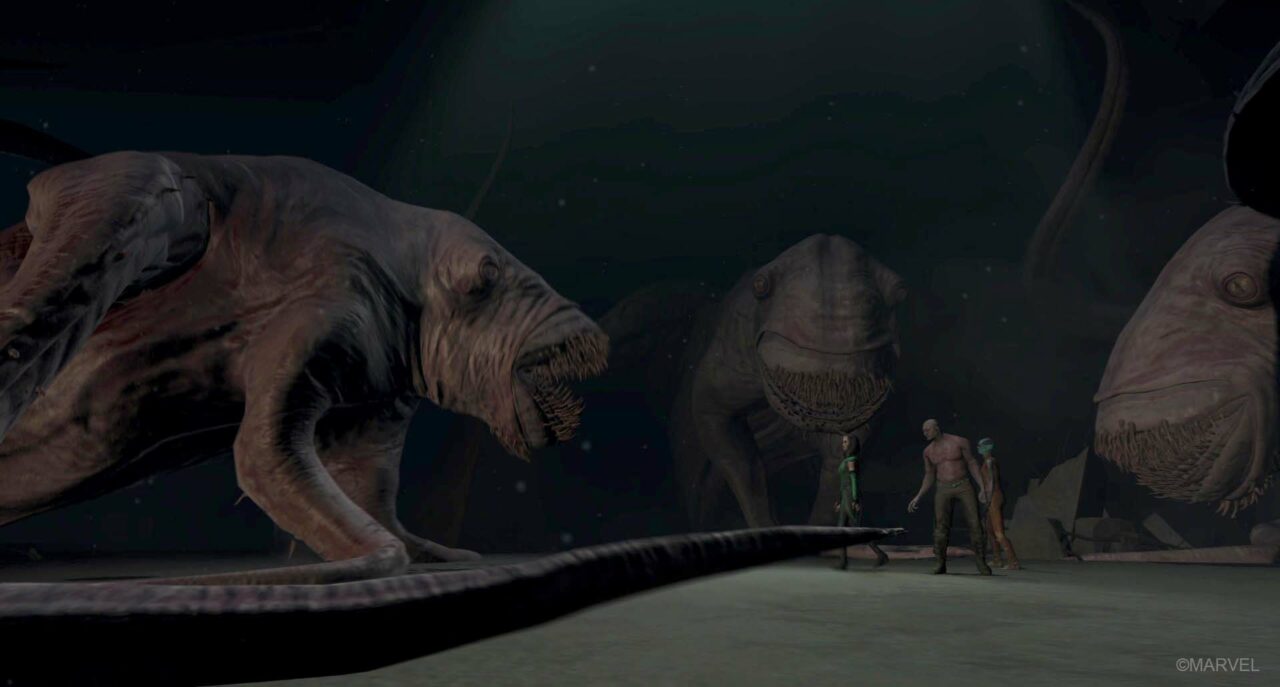
Mantis tames the tentacled Abilisks with her empathic powers. Previs frame, The Third Floor. @MARVEL
Signature shots, such as one of the High Evolutionary observing Phyla-Vell’s abilities, used techvis and motion control virtual production to plan the paths for on-set camera rigs. Envisioned as a 2001:A Space Odyssey-type shot, a character runs around a hamster wheel that has its own gravity.
“The ‘A’ plate of the hamster wheel itself had already been shot, so we needed to film a matching element of the actress running around the wheel,” said Techvis Supervisor Ari Feblowitz. “We didn’t actually have a zero gravity wheel, so she had to be on a treadmill, which meant the camera had to do everything the wheel was meant to do. We knew this needed a motion control robot-style camera since we were matching another plate that already had its own camera movement, but then the camera also had to mix the original motion with the relative motion of the wheel.”
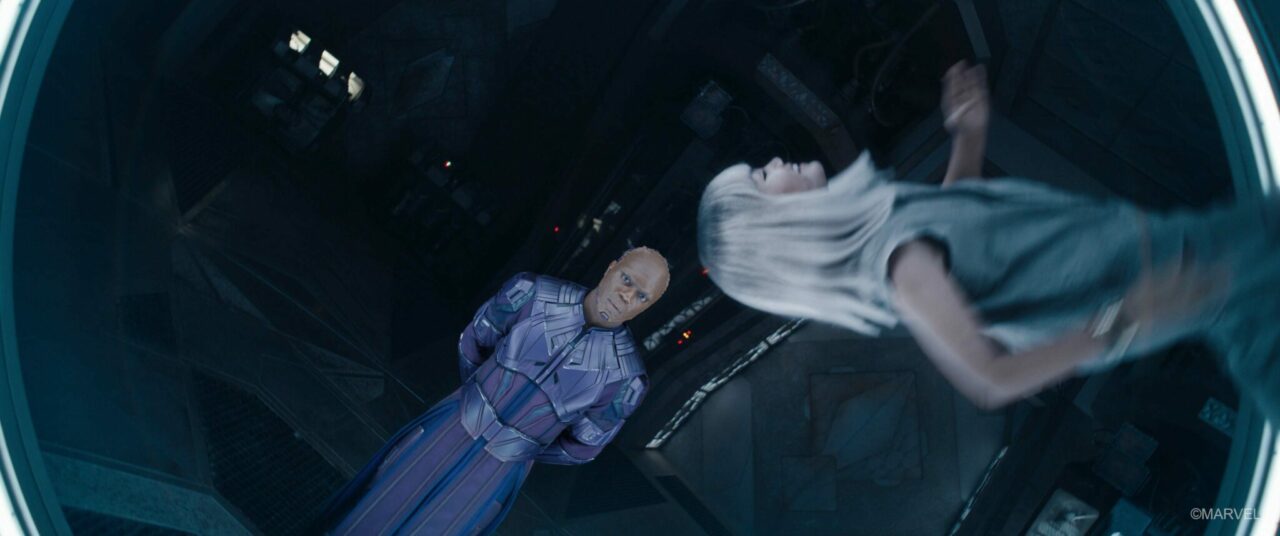
Final shot by the VFX team. @MARVEL
To pull this off, the actress wore a motion capture suit and was recorded running at various speeds on the treadmill. “We put that data into postvis to see what it would look like to run that speed around the wheel,” Feblowitz noted. “Then we baked the camera around the wheel relative to her motion and ‘froze’ her motion to stay in place on the treadmill. This caused the camera to not just spin around in circles, but also to physically move around in an oval shape.”
For some of the closer shots in that beat, the camera move needed to be scaled so as not to move beyond the motion control speed. “We had some handy scripts made by The Third Floor Head of Virtual Production Casey Schatz that helped us maximize each axis of the rig to achieve as near as possible to max speeds. We made sure the perspectives looked realistic ahead of time so that the same result could be easily set up and replicated during filming.”
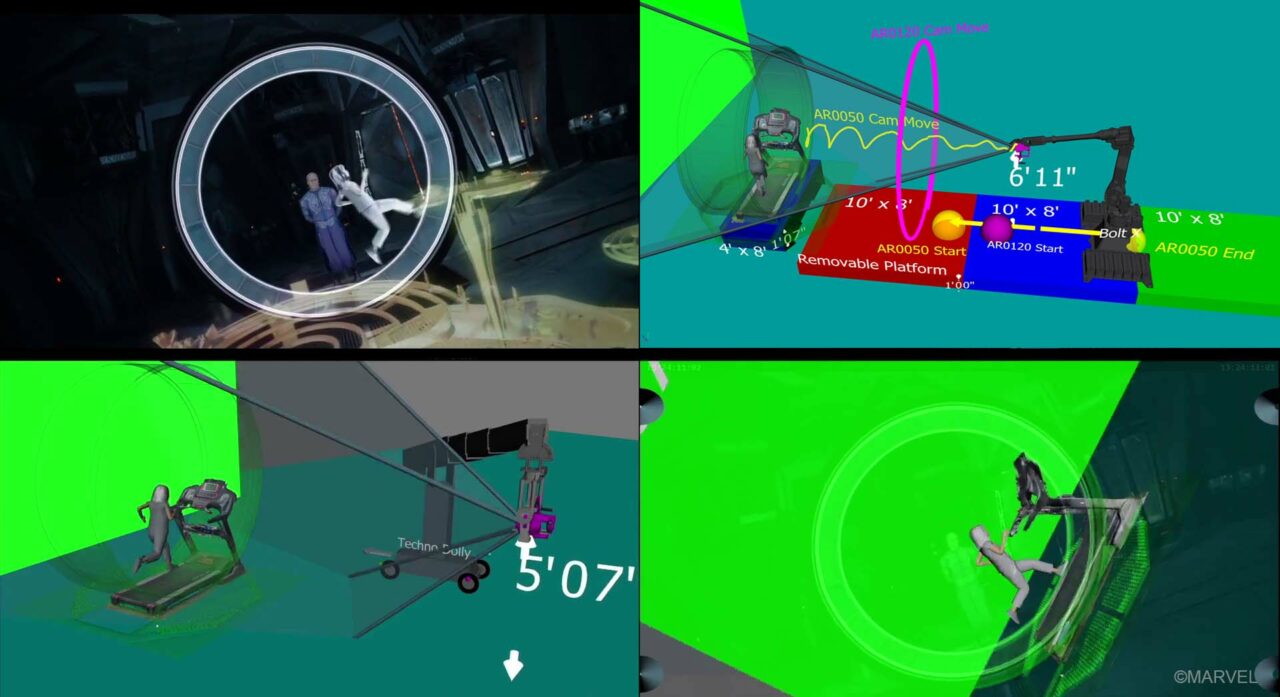
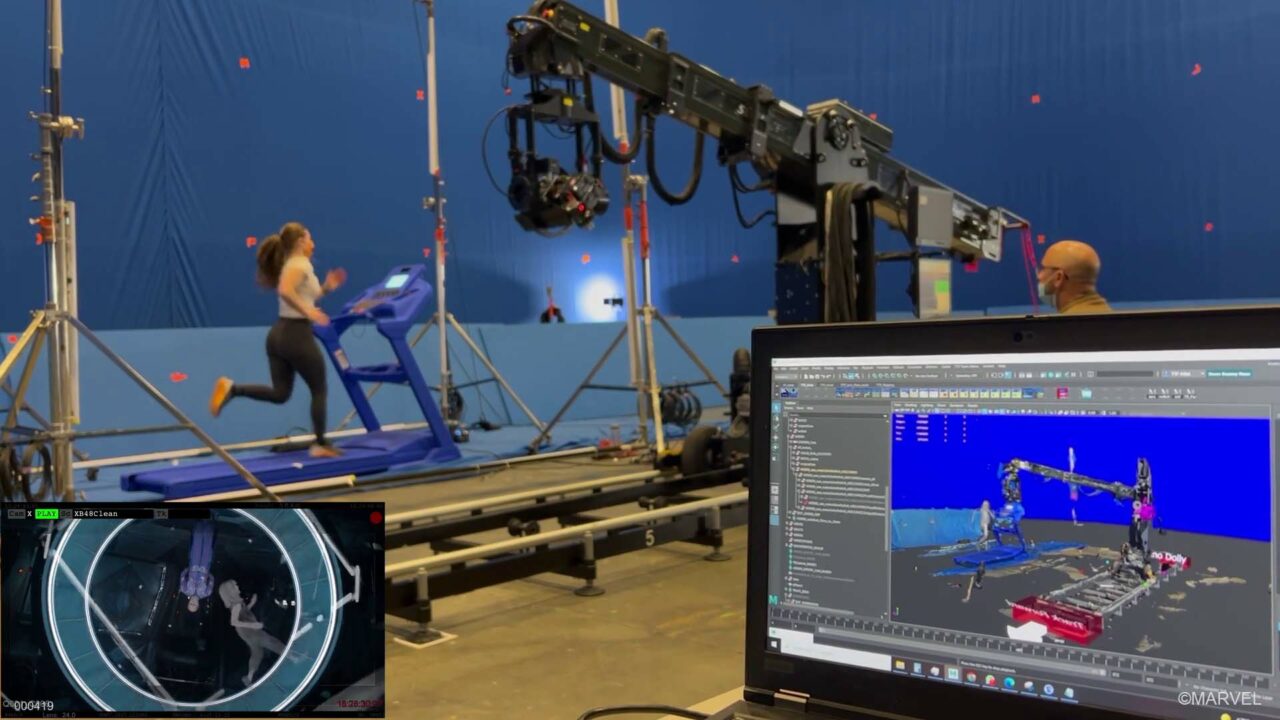
Technical visualization of the “hamster wheel” shot, with an on-set test. @MARVEL
The hamster wheel sequence used revolving camera techniques, worked out virtually, where the on-set camera inherited all of the motion and rotations of the actress running around the wheel.
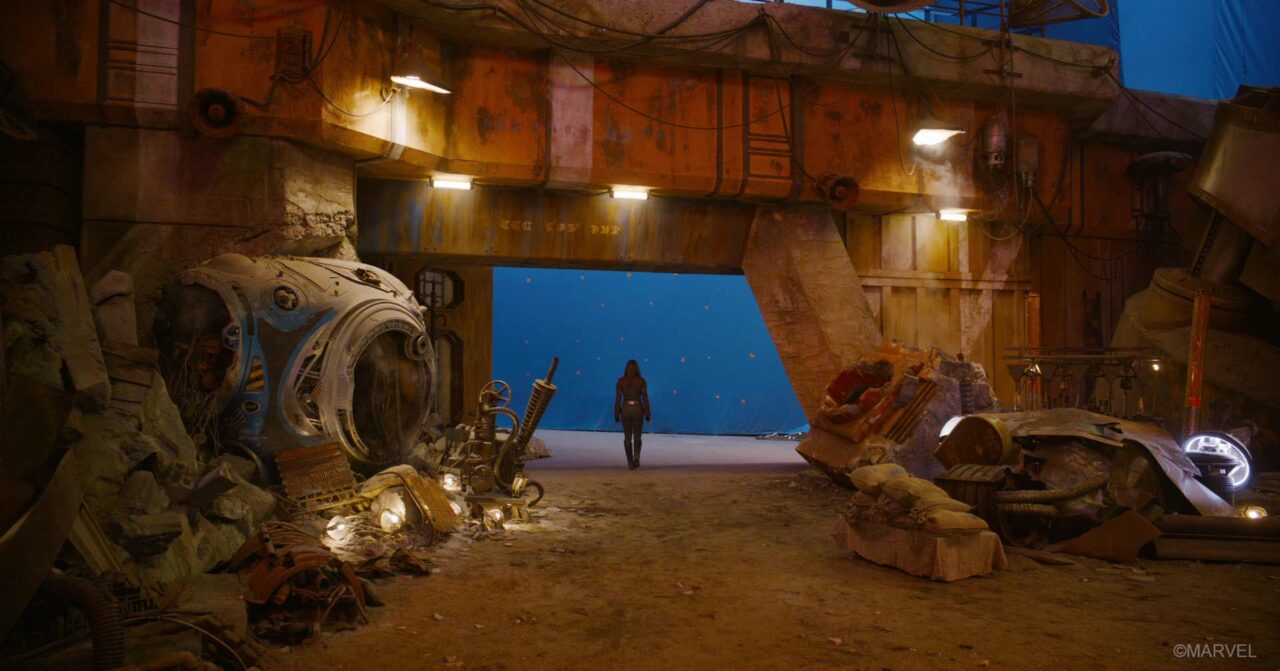
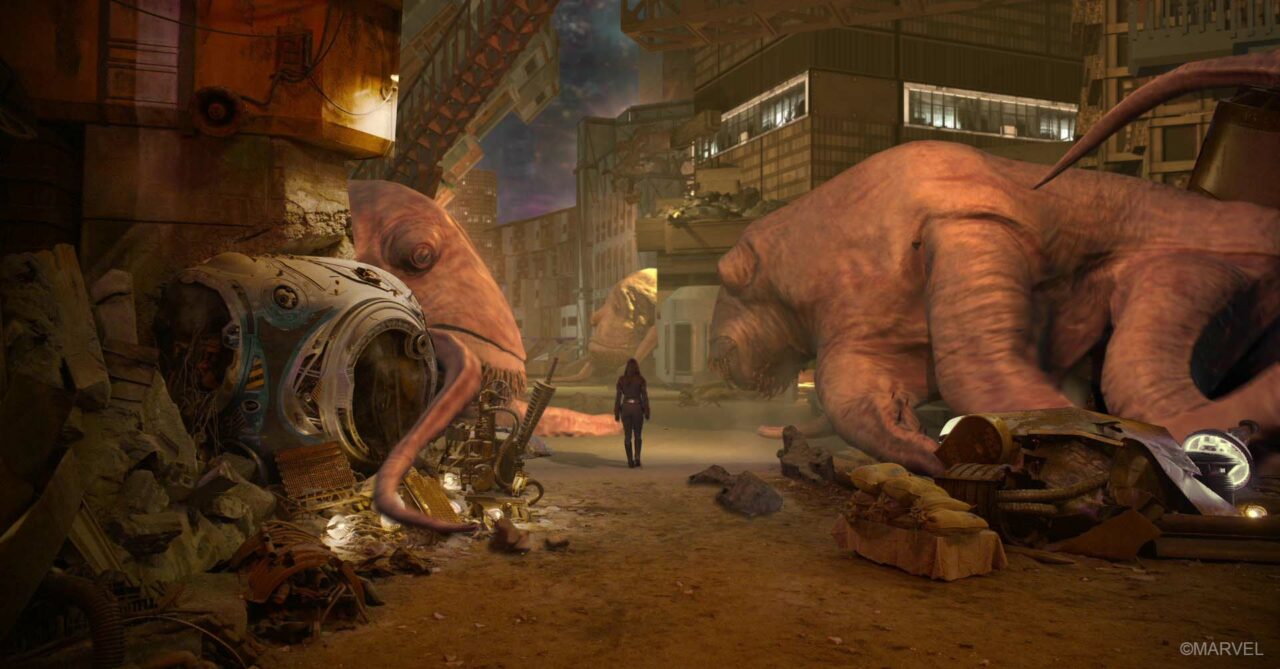
Visualization of a Knowhere street scene, with CG set extensions and CG characters represented through postvis. @MARVEL
